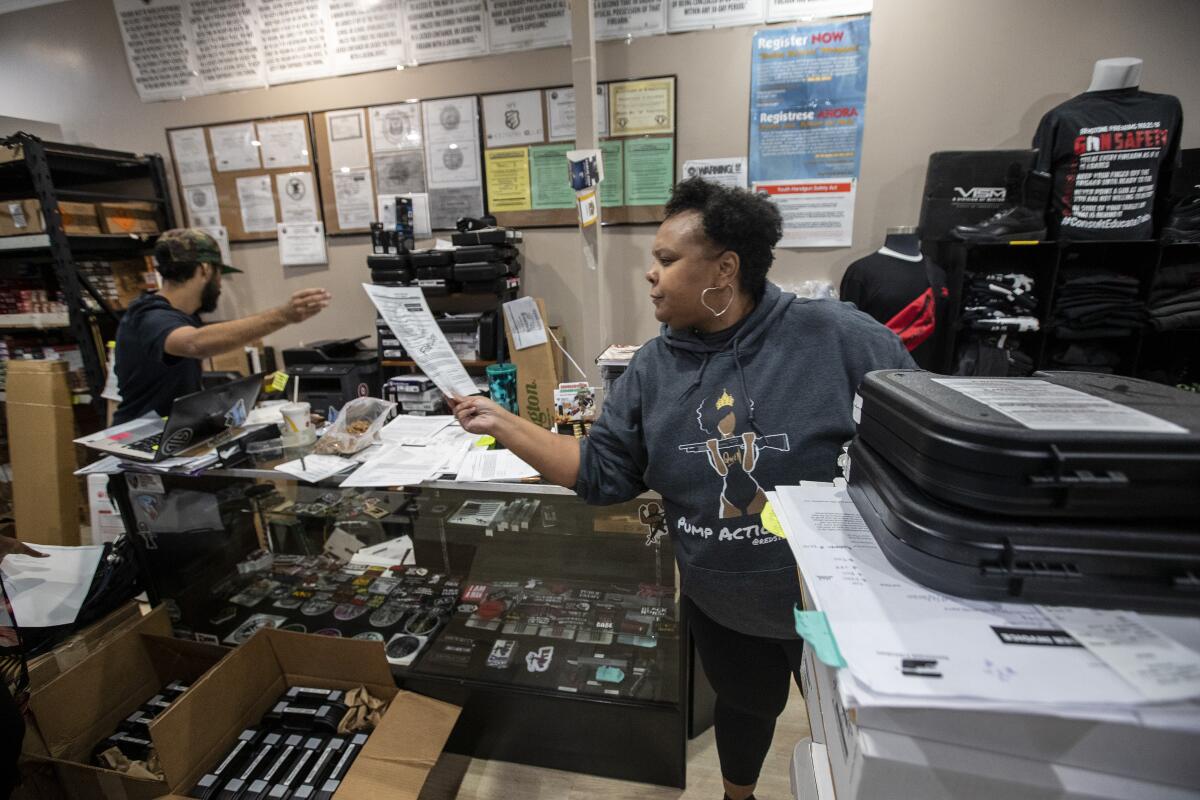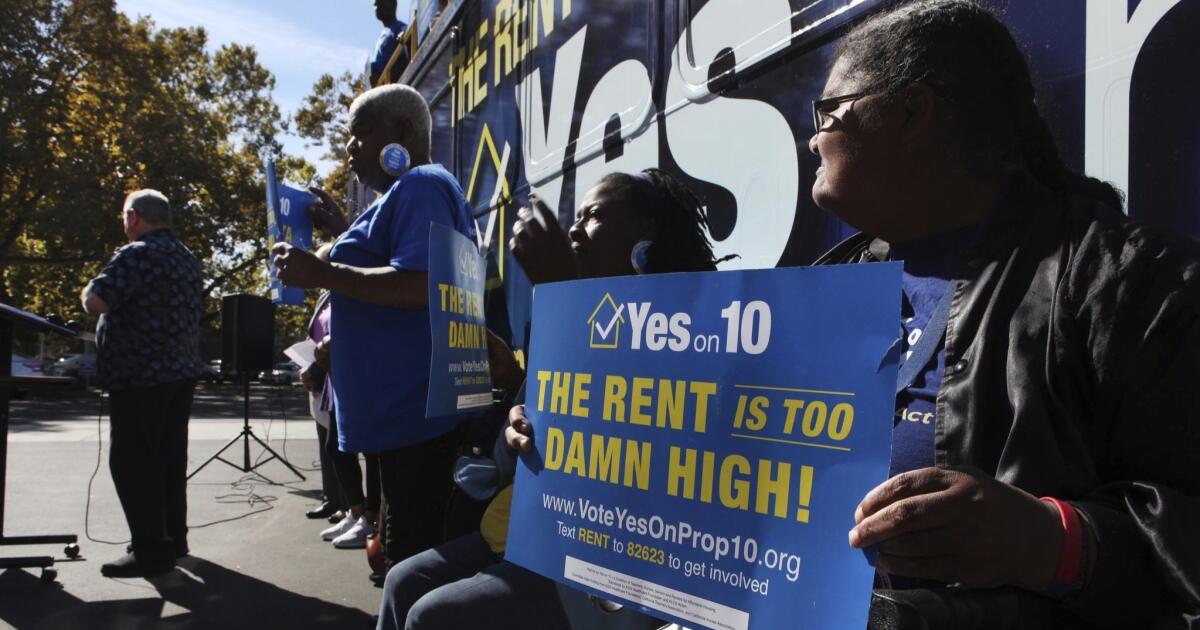Haunted UK pub with grave under bar and lights that won’t go off until you say ‘goodnight’ to ghost
The pub is said to be haunted by the spirit of a teenage girl whose grave is under the bar – and she won’t let you turn the lights off till you wish her ‘goodnight’
08:00, 31 Oct 2025Updated 08:32, 31 Oct 2025

A charming pub in England is making a strong bid for the title of Britain’s ‘most haunted’ boozer.
From the outside, it’s a quintessential British pub with white exteriors, hanging baskets and breathtaking riverside views. But step inside and you’re in for a scary surprise.
The eerie history of the pub becomes immediately apparent when you spot the grave under the bar. This isn’t your average local watering hole — it’s a supernaturally charged marvel.
The inn is said to be haunted by a heartbroken lover from the 11th century, whose gravestone lies within the bar and whose spirit is believed to still inhabit its four walls. A chilling tale surrounds this Cambridgeshire gem — the ghost of a teenage girl who died around 900 years ago is said to roam its corridors.
Staff insist she won’t let them switch off the lights until someone bids her ‘goodnight’, and there are numerous reports of menus mysteriously scattered on the floor. In fact, patrons have reported strange happenings at this St Ives pub — from restless nights spent on the premises, sudden cold spots and unexplained noises in the night.
The delightful pub, known as one of Cambridgeshire’s ‘most haunted’, gives The Eagle in Cambridge a run for its money. Not only does it serve up top-notch Sunday roasts and boast a stunning beer garden, but it also carries a chilling reputation that sets it apart as one of the county’s ‘most haunted’ pubs.
Once you hear the eerie tale associated with the tavern, it’s easy to see why. The story tells of a young woman named Juliet Tewsley, who was hopelessly smitten with a forester called Tom Zoul. Sadly, her feelings were not returned, a classic case of unrequited love.
Heartbroken, the 17-year-old is said to have taken her own life on March 17, 1050, by hanging herself from a tree near the Inn so that Tom would find her body on his way to work (or she drowned herself in the River Ouse on the same date in 1078, the details are somewhat unclear).
Given the stigma attached to suicide in the 11th century, Juliet was buried in unconsecrated ground near the Inn, her grave marked only by a simple stone slab. Over time, the pub has been extended and refurbished, and the young girl’s grave is now marked by a flagstone on the pub floor in the bar, having become an integral part of the interior.
Legend has it, her heartbroken spirit haunts the Old Ferry Boat Inn at midnight each year on the anniversary of her death. Juliet’s ghostly presence is said to be responsible for a series of unexplained phenomena, including lights that stubbornly refuse to turn off until someone says ‘Goodnight Juliet’, eerie sounds in the dead of night, and one particular night each year (March 17) when patrons claim they are kept awake by the palpable sense of paranormal activity.
In a 2019 interview with Cambridgeshire Live, Jamie Toms, former team leader and duty manager at the Old Ferry Boat Inn, shared some of the spine-chilling experiences he had while working – and living above the pub.
He said: “There’s a lot of things which go on at the pub, which people can’t really explain. Like sometimes the lights just won’t go out unless you say ‘goodnight Juliet’. Or menus will just appear on the floor.
“Sometimes when you’re here on your own you’ll hear things too like bangs and noises of doors opening. We’ve never seen an apparition but some guests and customers have said they’ve felt someone watching them in the bar or have felt very cold even when the heating is on full. Sometimes it can make you feel nervous but I’m pretty chill about it, we know we’ve got to respect the building and remember that it’s her building.”
Discussing Juliet’s death, Jamie revealed the week leading up to the anniversary is more challenging than the actual day. During this period, lights often flicker or brighten without explanation. “Guests will come down in the morning and say they’ve had a really bad night’s sleep – if that happens we always ask if they’ve walked over the grave which is in the restaurant.”
Jamie, who had been managing the establishment for eight weeks when he spoke to the publication in 2019, admitted he avoids crossing the grave himself.
The St Ives pub, like many others, claims to be England’s oldest. Dating back to 560 AD, it boasts connections to Anglo-Saxon England, reports Cambridgeshire Live. The Old Ferry Boat Inn is just four miles from St Ives and today, the venue preserves its heritage through its bar, traditional pub grub, and seven guest rooms.
Both locals and visitors can enjoy classic British dishes under the pub’s low wooden ceilings or in its charming beer garden by the River Ouse. The riverside pub offers a dog-friendly environment in a cosy setting, while the on-site accommodation provides guests with the convenience of staying overnight with parking available right outside.
So, if you’re a fan of the macabre and looking for a unique experience this spooky season – The Old Ferry Boat Inn might be just the ticket.
The 2020 election makes Southern California voters anxious
Four months ago, as protesters marched through the city demanding justice for George Floyd, Vena Petty was standing at a market in Burbank when she spotted an older white man glaring at her.
“It’s all your fault!” he hissed, adding an expletive.
Petty — who is Hawaiian, Black and Chinese — was standing quietly by herself at the time, so she’s confident he targeted her as a woman of color.
She tucked the memory away, but it resurfaced after President Trump during a debate told the Proud Boys, a far-right hate group, to “stand back, and stand by,” and again two weeks later, when Sen. Lindsey Graham made a comment, which he later said was sarcastic, about “the good old days of segregation.”
By then, Petty was convinced.
That afternoon, the 56-year-old, who was laid off from her temporary job at a film studio in March, visited Redstone Firearms in Burbank, determined to start the process of buying her first gun — something small, she said, to keep in her home. She hoped she would never need to use it, but believed that having a gun might give her some comfort in a world that felt increasingly out of control.
“Who knows what will happen?”
Geneva Solomon, right, works through a crush of paperwork for gun purchasers at Redstone Firearms in Burbank. Solomon runs the store with her husband Jonathan.
(Brian van der Brug/Los Angeles Times)
While the days leading up to most presidential elections carry a certain frenzied, exhausted energy fueled by attack ads and nonstop robocalls, this election cycle has felt abnormally anxiety-inducing for many Americans.
“We’re certainly in the middle of a perfect storm,” said Dr. Esther Sternberg, research director at the Andrew Weil Center for Integrative Medicine at the University of Arizona. Humans respond physiologically to stress — we sweat, our hearts race — and those responses, Sternberg said, are essential for our survival.
“It gives you the energy to fight or flee.”
And, in a sense, that’s precisely what some Americans are now doing.
Some voters — those with the means and flexibility to do so — have channeled their pre-election stress into finalizing plans to move out of the country depending on who wins in November. Others have ramped up their campaigning efforts and some, like Petty, have spent recent weeks researching the steps behind buying a gun. Thousands of Californians, including many first-time buyers, purchased firearms in 2020 — a spike attributed to fears over the pandemic, but also, in part, to people’s fears of “government collapse,” according to a recent survey conducted by researchers at UC Davis.
And the worries are bipartisan.
In the days after Kamala Harris was announced as Joe Biden’s running mate, Google searches for the phrase “Move if Biden wins” spiked, and after the first presidential debate, searches jumped for “Will Biden take away guns.”
In a viral video clip produced by the Young Turks, a progressive news outlet with a massive YouTube following, a couple wearing red MAGA hats said that if Biden wins, they plan to move to Panama. If Trump wins, a company executive who lives in L.A. County and asked to be identified only by her first name, Michele, said she plans to move to southern Portugal.
She long hoped to retire abroad, but the prospect of a second Trump term sped up her process, she said, adding that part of her feels bad, as if she’s abandoning the U.S. She believes the nation’s checks and balances have begun to erode, and she worries about what could happen in the days after polls close.
“I do see a lot of chaos potentially, from both sides,” she said. “I just don’t want to go through four more years of chaos.”
And she’s not alone.
Erendira Abel, who founded Baja Expat Services, a company that helps Americans with the process of relocating to Mexico, said that while she doesn’t bring up politics with her clients, a few of them, including Maria Denzin, 75, have cited it as one factor in their decision for moving south.
Denzin, who worked for Boeing for years, recently rented out her home in Palm Springs. She and her husband are now building a new place in Rosarito, Mexico, she said, and renting there in the meantime.
The main motivation for their move was monetary — their savings will go much further in Mexico — but for Denzin, a self-described “old hippie” who marched for civil rights decades ago, it was also about the man in the Oval Office.
“If, in fact, Trump wins the election, we will never return to the United States.”
Earlier this year, before Biden’s lead widened in the polls, Denzin turned to her husband, panicked over the possibility that Americans might reelect Trump.
“I’m so embarrassed.”
“I agree,” he said, and the couple hatched a backup plan: If things didn’t work in Mexico, they would move to Canada, where her husband has dual citizenship.
“The shine has really dimmed on America for me,” Denzin said, adding that she has gotten more set in her ways in recent years. She dropped contact with a couple of people after learning they intended to vote for Trump again — something she doesn’t think she would have done years ago.
“I do Facebook and I have my friends and it’s all about Dump Trump,” she said. “I’m much more one-sided. I don’t think that’s a good thing, by the way, but I get physically sick. I watch Fox News and I feel ill.”
Raquel Derfler, left, and daughter Sophia Derfler, in front of their home in Palmdale.
(Brian van der Brug/Los Angeles Times)
Back in L.A. County, Raquel Derfler, who lives in Palmdale, has spent much of her recent free time campaigning for Biden and congressional candidate Christy Smith.
The 51-year-old mother says she became more politically active after Trump was elected in 2016. She began volunteering for an immigrants’ rights group, and in recent months she has text-banked and sent postcards about Biden to potential voters. She now uses her rare outings — trips to the grocery store — to urge women she recognizes from the community to register to vote. Unless Biden wins by a landslide, Derfler worries that Trump will refuse to concede.
“My fight instinct has kicked in,” she said. “I’m fighting to save democracy.”
On a recent weekday afternoon at Redstone Firearms, the shop Petty visited, Geneva Solomon — who owns the gun shop with her husband, Jonathan — zipped around the room with an iPad. She greeted a man through the door and took down his number, telling him they’d text him when they were ready.
Wait times at the shop these days are sometimes as long as three hours, she said, noting that sales have more than doubled since March, spurred by a combination of fears, she believes, about the pandemic, civil unrest and a gun law recently signed by Newsom that called for some firearm models to be removed from the state’s safe-for-sale list. Although the shop makes a point of not being political — she doesn’t want customers to feel like they have to choose sides, she said — Solomon, 38, said customers sometimes share their views.
Some people vent frustrations with Democratic politicians, saying they fear it will eventually be almost impossible to buy a gun in California, and others tell her that during the shutdowns and recent protests they wondered whether the police could truly protect them and their homes. In recent months, Solomon said, she has met several new customers, many of whom are Black, who told her that they’d never considered owning a gun before, but now wanted to learn more.
One of those customers was her niece, DeJonaé Shaw.
DeJonaé Shaw, a 31-year-old nurse who lives in Upland, recently bought her first firearm at Redstone Firearms in Burbank.
(Brian van der Brug/Los Angeles Times)
For a long time, the 31-year-old nurse, who lives in Upland, was afraid of guns, but her fears slowly faded after visiting the range with her aunt and taking safety courses. She considered buying but put it off.
Then, early in the pandemic, while in line at the supermarket, she watched as someone ran a cart over a child in a rush to buy hand sanitizer. It felt lawless, she said, and people were treating each other like dirt.
“I never thought I’d see that,” she said. “Living in America, we’ve become complacent, with a façade of protection our government gives us.”
A few days later, she purchased a Smith & Wesson handgun and although she hopes not to need it, it’s a comfort to have, she said, especially as election day nears. Like Petty, she was struck by Trump’s comment about the Proud Boys during the first debate, and by his statement urging his supporters to “watch very carefully” at the polls. It made her think about the long history of voter disenfranchisement and oppression of the Black vote in America.
This election cycle has been disappointing, said Shaw, a registered Democrat, who said her views don’t align with the party’s on all issues. A Bernie Sanders fan who also liked Elizabeth Warren and Marianne Williamson, Shaw said she now intends, somewhat begrudgingly, to vote for the Biden-Harris ticket.
“How are we in this situation again?”
It would be another lesser-of-two-evils decision, she said, after eight of the most stressful, anxiety-filled months of her life.
High school girls’ volleyball: City Section playoff results and pairings
CITY SECTION PLAYOFFS
THURSDAY’S RESULTS
Quarterfinals
DIVISION I
#1 L.A. University d. #9 Larchmont Charter, 25-12, 25-12, 25-16
#4 L.A. Marshall d. #5 Sherman Oaks CES, 25-23, 25-23, 25-19
#3 Granada Hills Kennedy d. #11 San Pedro, 27-25, 28-26, 25-22
#2 Grant d. #10 South Gate, 25-12, 25-19, 25-16
DIVISION II
#1 East Valley d. #8 GALA, 25-13, 20-25, 25-20, 25-15
#5 North Hollywood d. #13 Lincoln, 15-25, 25-14, 25-19, 25-15
#6 Maywood CES d. #14 Bravo, 3-0
#2 Mendez d. #10 King/Drew, 25-19, 16-25, 25-21, 25-27, 15-11
Note: Quarterfinals Divisions III-V Nov. 3 at higher seeds; Semifinals Open-Division I Nov. 4 at higher seeds; Semifinals Divisions II-V Nov. 5 at higher seeds; Finals (all divisions) Nov. 7-8
JetBlue flight diverted to Tampa after altitude drop, 15 hospitalized

Oct. 31 (UPI) — At least 15 passengers of a JetBlue flight were hospitalized after their aircraft experienced a sudden drop in altitude, according to reports that state the plane made an emergency landing in Tampa, Fla.
According to air traffic tracker Flightradar24, the Airbus A320-232 departed Cancun, Mexico, at 1:03 p.m. local time Thursday for Newark, N.J., but was diverted to Tampa, where it landed.
JetBlue told Fox News in a statement that flight 1230 experienced a “drop in altitude” and a “flight control issue,” causing it to be diverted.
It landed in Tampa at around 2:18 p.m. EDT.
Tampa Bay Fire Rescue spokesperson Vivian Shedd told CNN in a statement that between 15 and 20 people were evaluated and transported to the hospital with non-life-threatening injuries.
“The safety of our customers and crew members is always our first priority, and we will work to support those involved,” JetBlue said.
The Federal Aviation Administration is investigating.
The incident comes as the now month-long government shutdown has been particularly taxing on air travel, resulting in an increase in traffic issues as employees are being asked to work without pay. Ground delays have been reported throughout the country.
U.S. Warns China: Will ‘Stoutly Defend’ Its Interests in Indo-Pacific
U.S. Defense Secretary Pete Hegseth met Chinese Defense Minister Dong Jun in Kuala Lumpur on Friday, emphasizing Washington’s commitment to defending its interests and maintaining regional balance. The meeting held on the sidelines of the ASEAN defence ministers’ gathering marked another step in restoring military dialogue between the world’s two biggest powers after a period of strained ties.
Why It Matters:
The talks reflect cautious progress in U.S.-China military communication amid growing tensions in the South China Sea and around Taiwan. Washington’s message of deterrence paired with calls for continued dialogue signals an effort to prevent miscalculations while asserting its regional presence.
United States: Seeking to maintain deterrence and open communication channels.
China: Focused on sovereignty claims and wary of U.S. military posture in Asia.
ASEAN Countries: Caught between great-power competition but urging stability.
Regional Allies (Japan, Philippines, Australia): Likely to welcome continued U.S. engagement.
What’s Next:
Both sides are expected to hold further military-to-military talks, potentially including nuclear transparency and theatre-level discussions. However, with Taiwan and the South China Sea remaining flashpoints, sustained communication will be key to avoiding escalation in the Indo-Pacific.
With information from Reuters.
Inside original Five line-up’s comeback gig after 25 years packed with 90s hits, screaming fans & impressive dancing
THE original line-up of Five have finally stepped back on stage for the first time in 25 years.
Eight months since they announced their comeback in Bizarre, fans swarmed to the Utilita Arena in Cardiff.
Sign up for the Showbiz newsletter
Thank you!
Five hours before kick-off, I joined Abz Love, Jason “J” Brown, Ritchie Neville, Scott Robinson and Sean Conlon as they flitted between agony and ecstasy backstage . . .
Sipping an Asahi 00, Scott says with a laugh: “I’m a nervous wreck,” just as Ritchie brings me a handmade lucky charm from a fan who has flown all the way from China.
He says: “Do you want to have a hold of my ball?”
J adds: “He’s flown over from China. It’s taken him 15 hours. He’s taken two weeks off work and he’s seeing six shows.
“He’s renamed himself J and he gave us all these lovely gifts. He made that ball himself.
“And he’s got silk scarves for us all too. He embroidered them all himself. It’s a really nice touch.”
Telling me the ball is a symbol of good luck, Abz interjects and jokes: “Or he’s cursed them and we’re all f***ed.”
‘Getting shirty’
But they most certainly are not. As Five walk on stage to deafening screams later in the evening, they are slick, solid and on song.
The set begins with a bang, with the lads emerging from a haze of smoke before they burst into Slam Dunk (Da Funk) and Got The Feelin’.
For a band who last performed together two decades ago, they’ve not lost their chemistry.
Recalling the run-up to the first night, Ritchie explains: “The rehearsals had all gone great but two days ago, I was a wreck.
“As it went on, for the first time we had a couple of moments where we were getting shirty with each other.
“We all had to just step back and say, ‘Let’s just really look at the situation with 48 hours to go until the first gig.
“Let’s just acknowledge that whatever level of stress you think you’re at, you’re actually probably a little bit more’.
“We just worked to get through it all.”
The screams of fans — including a woman holding up a message that reads: “Get your tops off” — never subside as they whip through their back catalogue. Their rendition of 1998 track When the Lights Go Out proves emotional.
Fans who were looking forward to seeing the proper Nineties choreography got a treat.
It’s clear the lads have worked hard to get to this point.
“We’ve actually got new routines,” J says with a smile.
Scott adds: “The old moves didn’t come back immediately but there was some muscle memory there.
“Paul Domaine, our choreographer, he’s less spiky than he was in the Nineties.”
Abz jokes: “We’re better behaved now,” before J adds: “We’re better than we were before, but we’re not giving the behaviour of fully grown men with kids at nearly 50 years of age.”
Ritchie adds: “He was dealing with naughty school kids but now at least we’re applying ourselves a bit.”
Sitting in the underbelly of the arena, Five are physically and mentally in the best place they’ve ever been.
“We’ve been saying to everyone that we’re going to do the best tour ever,” Scott tells me.
“We said we would bring it all: the vocals, the dance moves. We weren’t just saying it though. We believed it.”
Sean adds: “It is 100 percent the best show we have ever done. Better than anything in the Nineties.
“It’s like everything’s been delayed to get to this point. It’s been 25 years. It’s meant to be.”
A-list celebrities including Cara Delevingne have been slipping into their DMs to blag tickets to the tour, which will see Five playing 24 more shows across the UK and Ireland, including Brighton tonight.
But Five have kept the first night more intimate.
Scott says: “My wife Kerry is here with my twin girls.
“They’ve never seen us perform as a five-piece in their lives.
“On the journey up here, one of my girls sent me a message and I let the boys read it. I couldn’t do it because I kept crying.
“She said how proud she was of me. She’s 11 years old. I thought, ‘This is going to be epic’.
“All I know is that I am going to be crying my eyes out.”
The atmosphere rocks up a notch with Let’s Dance and Everybody Get Up, before Five knock through a medley of House Of Pain’s Jump Around, Place Your Hands by Reef and Daft Punk’s Get Lucky.
A final encore of Keep On Movin’ closes a history-making first night and Five are grinning like Cheshire cats.
On stage, Sean takes a moment to reflect and turns to his bandmates as he says: “We are lucky guys.”
As the band rallies round him, he adds: “I just wanted to say, I did not expect that so many years on it would mean so much to so many people.”
Ash a Madge coney phoney
ASHLEY ROBERTS looked the image of Madonna in this outfit for Halloween – as hopes build she will return with the Pussycat Dolls.
She was certainly more treat than trick in bright-red lippy and iconic Jean Paul Gaultier-style cone bra, just like the pop superstar on her Blond Ambition tour from 1990.
It comes as Ashley’s former bandmate Nicole Scherzinger teased “possibilities” for the group, after settling a legal dispute with the group’s founder Robin Antin, which derailed their planned 2020 arena tour.
Nicole told LA Times: “Our lawsuit is settled. That should have never happened. That was an unfortunate mistake on someone’s part – not mine.
“However, time heals things, and grace is always beautiful in life. I’m very positive and, dare I say, excited for the possibilities to come on the horizon.”
Shona bid for charts stardom
EASTENDERS’ Shona McGarty is following in the footsteps of fellow Walford favourites Nick Berry, Martine McCutcheon, Sid Owen and Michelle Gayle with a music career.
The actress, who played Whitney Dean in the soap from 2008 to 2024, has today dropped her debut single Unapologetically Me in a bid to make a name as a powerhouse vocalist.
The track was co-written and produced by hitmaker Steve Anderson.
He has previously worked with Kylie Minogue and Britney Spears, so she’s off to a good start.
Shona said: “I wrote Unapologetically Me as a reminder to myself, and to anyone who’s ever felt pressure to be someone they’re not – that it’s OK to simply be who you are.
“Having spent years in the public eye, surrounded by glitz, glam, and expectation, I’ve often felt the need to play a character, to present a polished version of myself that fits what people want to see.
“But beneath all that, I’m just human. I’m silly, sensitive, strong, and imperfect, and that’s OK.”
Freya returns as Wicker Woman
FREYA RIDINGS is pulling no punches on comeback single Wicker Woman – the first taste of her third album that’s coming out in 2026.
The English singer-songwriter, who posed in this striking and spooky black dress, said of the song that is released today: “It’s an unashamed, euphoric celebration of reclaiming primal feminine power, a return to the core of who we are, and an ode to the forgotten women and gods who came before us.”
Mika is also making a return today with his single Modern Times, ahead of an arena tour next spring, and Jessie J releases H.A.P.P.Y.
British boyband ABSNT MIND have put out their latest single Stitch and fresh from winning over a new fanbase on The Celebrity Traitors, Cat Burns has dropped her second album, How To Be Human.
Lily on tour
LILY ALLEN will perform her new album West End Girl in its entirety on a 13-date UK tour next year.
She will hit the road for the first time since 2019, kicking off at Glasgow’s Royal Concert Hall on March 2.
Tickets go on sale from 10am next Friday.
KT’s got eye on Prada 2
SOMEHOW it has been 20 years since KT Tunstall broke on to the scene with her debut album Eye To The Telescope.
The record peaked at No3 in the UK charts and spawned a series of hits including Black Horse And The Cherry Tree, Other Side Of The World and Suddenly I See, which featured in 2006’s The Devil Wears Prada.
Now with Devil Wears Prada 2 set for release in 2026, KT is back in the studio working on a follow-up track which she hopes film bosses will use in a full-circle moment.
KT told Bizarre: “I would love them to use Suddenly I See, but I think they will want to move it on.
“I am writing a song to pitch to them as it’s the 20th anniversary of that too and they are using the same cast.
“I am coming up with a sequel. Who knows if they will be interested but I am going to give it a shot.”
She has today released a special 20th anniversary edition of Eye To The Telescope featuring a series of new tracks including Anything At All – which sees KT duet with her younger self.
She said: “It was so weird. I’m listening to this young woman who hasn’t had a record out yet.”
The never-before-heard title track is also on there.
She added: “I’d only written the verse and chorus and then I abandoned it.
“But the record label said, ‘Why don’t you finish that song?’ It was difficult as I couldn’t really get myself back to what I was thinking at the time. It’s really cool it has taken 20 years to write the song.”
Promising hint

FLEETWOOD MAC greats Lindsey Buckingham and Stevie Nicks have given a promising hint that the band will reunite for the 50th anniversary of their album Rumours.
The former couple had a huge fallout in 2018 but have revealed they are now back in touch after re-releasing their 1973 joint album Buckingham Nicks – so they really could come back together for the band.
The pair were interviewed separately about the making of the record, for the podcast Song Exploder.
But proving they are back in touch, Stevie said on the episode: “Lindsey and I started talking about it last night. This whole thing seems really like yesterday to us.”
‘You don’t have to hurtle down slopes or dance like crazy at après parties’: readers’ favourite winter mountain holidays in Europe | Winter sports holidays
Why Innsbruck makes the perfect winter base
Innsbruck offers lots of options for a winter holiday. I found it’s a place where you don’t have to hurtle down ski slopes or dance like crazy at après-ski parties. In fact I was amazed when I took the 20-minute cable car from the city centre up 2,000 metres to an area where locals were sitting in deckchairs on the snow reading books and sipping hot chocolate in the strong Tirolean sunshine. You can ski to your heart’s content on slopes just half an hour from the famous Imperial Palace in the city centre. The city authorities provide some guided free walks and winter activities, including a cross-country skiing taster if you have a Welcome Card provided by your hotel. Then again, you can just sit and sample strong Austrian coffee or Gerschtnsuppe (soup with barley, smoked meat and vegetables) at riverside cafes and pubs.
Gina
Profile
Readers’ tips: send a tip for a chance to win a £200 voucher for a Coolstays break
Show
Guardian Travel readers’ tips
Every week we ask our readers for recommendations from their travels. A selection of tips will be featured online and may appear in print. To enter the latest competition visit the readers’ tips homepage
–
Ski and hit the beach in one day in Andalucía
The Sierra Nevada range is just 17 miles south of Granada in Andalucía, making the beautiful city a viable place to stay if visiting these high mountains. For skiers the resort village of Pradollano is at 2,100 metres, from which cable cars and chairlifts reach up close to the 3,000-metre summits. It’s a fantastic ski resort, Europe’s most southerly, but is still very much under most people’s radar. There are 112km of pistes and 134 slopes, most of which are well above 2,000 metres so snow is fairly reliable. This year it’s opening on 29 November with ski passes from €38. It’s little more than an hour’s drive to Motril and the Mediterranean. You really can ski in the morning and go to the beach in the afternoon.
Stephen McCann
Peaks of the Balkans, Albania and Montenegro
Last year I enjoyed a brilliant winter trip in the Albanian Alps and in Montenegro. Highlights included the walk to and from the spectacular Grunas waterfall in Theth national park in Albania, and the hike to 1,970-metre Hrid lake in Montenegro’s Prokletije national park. We skied and walked a section of the 120-mile Peaks of the Balkans trail and spent some time in the lively town of Plav, which included a folk song and karaoke night with some locals where I taught one group a version of Last Christmas to great applause.
Nick
The Alps in infrared, Austria
We stayed at the lodge Jagdhaus (€220 a night, sleeps up to 6) at Furx in western Austria. This wonderful place has a sauna, an infrared chamber and an external hot tub from which to enjoy special views towards the Alps. There are any amount of scenic walks on your doorstep and, 100 metres below, there is the Peterhof restaurant with remarkably low prices for such a high standard of cuisine.
Kevin Hill
Twinkling lights in Poland’s Tatra mountains
I first discovered the Tatra mountains on a day trip from Kraków some years ago and returned for a mountain break last February, staying in Zakopane, which is a great base for skiers and anyone who enjoys winter mountain activities. It’s affordable (my chalet for a week was just €400) and has lovely traditional wooden and stone houses, cafes and cheap restaurants serving tasty Polish stews and filled pierogis, which kept us warm throughout. We hired snow shoes to explore the foothills by day and at dusk the twinkling lights of the mountain villages came on, adding to the wonderful scene of lakes, mountains and forests. We also enjoyed sleigh rides and husky-driven carriages through the silent forests to magical ice mazes.
Yasmin
after newsletter promotion
The amazing light of Eryri, north Wales
Our favourite winter break is at Llanberis in Eryri national park (Snowdonia). It’s peaceful, dramatic, and full of charm without Alpine crowds. We love the cozy log fires, hikes up the mountain passing waterfalls and the choice of yurts and eco-lodges to stay in. It’s particularly stunning in cold weather when kissed with snow or frost. The amazing light on the Llyn Padarn recreates a mirror in a breathtaking landscape dominated by Yr Wyddfa (Snowdon). A special treat is the authentic Welsh community of makers and local craftspeople. Music, food and friendliness make this a more delightful experience than going abroad.
David Innes-Wilkin
Adrenaline-fuelled days in Austria
Kreischberg in the state of Styria is a medium-sized resort with log cabins and a James Bond-style restaurant in which to dine in style. We stayed at the base of the mountain in the Ferienpark cabins; each with log burners to cosy up beside. When it comes to skiing, take the long telecabin up the Kreischberg and explore blues, reds and blacks. For the best slopes head to Rosenkranzhöhe, where there are sweeping reds and blacks with expansive views over the Alps. After an adrenaline-fuelled morning, and for the best restaurant views, head to the Eagle, styled like a Bond villain’s lair.
Mark
Winning tip: Ice age roots in Sweden
There are mountain areas in Sweden where some of the oldest living things in Europe survive. When the ice retreated from Scandinavia 9,000 years ago, various isolated elevated areas were left frozen, and the root systems of ice age trees live on. Sonfjället national park in the empty Härjedalen region of central west Sweden is one such area, where the spruce Old Rasmus, grown from 9,500-year-old roots, can be found. The park is also known for its high density of bears. I return to the mountains in summer, autumn or winter. I find them incredibly peaceful; you can experience absolute silence and often you can gaze at the northern lights.
Lars
Trade imbalance: How do EU membership contenders stack up against the bloc?
As Brussels pushes ahead with a new wave of enlargement, the numbers behind Europe’s trade with its candidate countries reveal a story of dependence, asymmetry, but also a large, untapped potential.
The official EU candidates are Albania, Bosnia and Herzegovina, Moldova, Montenegro, North Macedonia, Serbia, Turkey, and Ukraine. Kosovo is treated as a potential candidate.
Together, they cover a diverse sweep of geography from long Adriatic coastlines to lush forests and some of Europe’s most productive farmland — also including some of Europe’s youngest populations.
But while trade flows between the bloc and future members are booming, the relationship remains unequal, with more EU-produced goods finding a market than those stemming from potential member states.
A relationship measured in billions
According to the European Commission’s 2025 Western Balkans trade factsheet, total trade in goods between the EU and the six Western Balkan partners reached €83.6 billion in 2024, up 28.6% since 2021.
Exports from the EU to the region stood at €49.06bn, while imports from the Western Balkans came to €34.52bn, leaving Brussels with a €14.54bn trade surplus.
The EU’s dominance as a market is overwhelming. It accounts for around 62% of all Western Balkan trade, whereas the region represents barely 1.7% of the EU’s external trade.
For Serbia, Bosnia and Herzegovina, and Albania, between two-thirds and three-quarters of all exports go to EU countries.
“All (candidate) countries, with the curious exception of North Macedonia, have persistent trade deficits with the EU, meaning they import more from the EU than they export there,” explained Branimir Jovanović, an expert with The Vienna Institute for International Economic Studies (WIIW).
“These are economies with small productive sectors. They do not produce enough of what they need, so they have to import, and they also do not produce enough to export,” Jovanović continued.
Over the past decade, North Macedonia has become a production base for components that go straight into EU industry that qualify for preferential access to the EU market under the Stabilisation and Association framework (SAA).
The result is that North Macedonia can sell a relatively high share of what it makes directly into the EU without being blocked by technical standards.
This is very different from, say, Albania, which leans more on raw materials and low-value textiles, or Montenegro, which is tourism-heavy and import-dependent in goods.
It is also different from Bosnia and Herzegovina and Serbia, which still import a lot of higher-value machinery from the EU and then export a more mixed, lower-value basket back.
Ukraine and Moldova import high-value EU machinery, vehicles and industrial equipment, while exporting mainly lower-margin goods. In essence, they supply raw materials and basic products, and the EU supplies the technology to produce them.
Barriers to trade
The Western Balkans trade with the EU under SAAs, which gradually remove tariffs and align national laws with EU rules as part of the formal accession process. By contrast, Ukraine and Moldova operate under Deep and Comprehensive Free Trade Areas (DCFTAs), broader deals that open large parts of the EU single market in exchange for adopting much of the EU’s regulatory framework.
In essence, SAAs are a pathway to membership, while DCFTAs offer deep EU market integration without full membership. This distinction has, however, become blurred — with Brussels indicating that it believes in full membership for Ukraine and Moldova after the full-scale invasion of Ukraine in 2022.
“Countries exporting to the EU face many barriers aside from tariffs. Economists call these technical barriers to trade, such as phytosanitary standards,” Jovanović explained.
So even if they produce something that there is a demand for in the EU, it never reaches those markets because these companies might not have the necessary certificates.
“So, although unemployment has decreased, there is no real progress in development. There is also a real risk of a middle-income trap, in the sense that these economies remain assembly-line economies, with low wages and limited technological development and innovation.”
The same debate now extends to Ukraine, which formally opened EU accession talks in 2024. Despite the war, trade between the EU and Ukraine has surged. Eurostat data shows the bloc exported €42.8bn worth of goods to Ukraine in 2024 and imported €24.5bn, yielding a €18.3bn surplus for the EU.
The composition of that trade has shifted dramatically since the Russian invasion. Agricultural commodities still dominate Ukrainian exports such but the EU has become its conduit for reconstruction materials and machinery.
Neighbouring Moldova, another candidate country since 2023, shows similar patterns. The EU is Moldova’s biggest trading partner, accounting for 54% of its total trade in goods in 2024. Some 65.6% of Moldovan exports head to the EU.
Trade turnover reached about €7.5bn last year, with EU exports to Moldova amounting to €5.1bn and imports to €2.4bn.
EU standards, a distant dream?
The Western Balkans have made solid progress since the early 2000s, but full convergence with the European Union remains a distant goal, warned the OECD’s Economic Convergence Scoreboard for 2025.
The six economies have more than doubled their output in two decades — yet the region still only reaches about 40% of the EU average. At current growth rates, full convergence won’t arrive until 2074.
The region’s output per person (in purchasing-power parity terms) has more than doubled in 20 years, showing real improvement in productivity, investment, and living standards.
That means the Western Balkans are closing the gap, but painfully slowly, and the strong growth rates are offset by the much higher productivity and capital stock inside the EU.
Growth, on its own, is not enough for convergence. The Western Balkans need qualitatively different growth which is driven by innovation, skills, and higher-value industries.
Infrastructure and productivity are the region’s weakest links.
According to the OECD report: “The insufficient quality and coverage of core public transport infrastructure can be a significant obstacle to higher economic growth…as inadequate transport networks can severely constrain the connectivity of producers and consumers to global and regional markets.”
With regard to Ukraine, its economy has adapted after a historic shock, but the damage is staggering. Much of the population has been displaced and large swathes of infrastructure have been destroyed.
Output fell –28.8% in 2022 and rebounded +5.5% in 2023. Public finances are being stretched to the limit by defence needs, hindering convergence with EU member states.
Foreign investment: Friend or foe?
Foreign direct investment (FDI) brings factories and jobs to candidate countries, as well as building stronger links with existing EU member states. Even so, Jovanović argued that this has not led to “structural transformation” in the candidate nations.
The pattern is visible, for example, in Serbia — where car plants are boosting employment but the country is still importing high-tech machinery.
When FDI concentrates in lower-value stages of production and local supplier bases remain thin, wage gains are limited and more value is captured abroad.
“There is a duality in how FDI is perceived: politicians still see it as the key — sometimes even the only way — to develop the economy, while people are increasingly seeing it as a vicious circle,” said Jovanović.
“Hence, a change in the economic model is long overdue — with a more selective approach towards FDI, focusing on high-quality and high-tech investment and a greater focus on domestic companies through industrial and innovation policies,” Jovanović added.
The argument is clear: while FDI raises employment and links these economies to EU markets, it becomes transformative only when it upgrades the local production base.
Otherwise, candidate countries risk remaining an assembly platform rather than a full partner in Europe’s value chains.
A test of Europe’s promise
In the end, the numbers tell both a success story and a warning. They show integration without transformation: Exports are up, factories are open, but productivity and infrastructure still lag.
The next phase will need to hinge on quality, not just quantity, say experts. This means selective FDI that upgrades supply chains, targeted single-market access tied to reforms, and faster investment in skills, energy, and transport.
If Brussels and the candidates can shift from assembly to innovation, the gap can narrow within a generation. If not, the candidate countries risk remaining a dependable workshop rather than a prosperous partner.
Read the full text of President Obama’s economic speech in Kansas
The following is the full transcript of President Obama’s remarks in Osawatomie, Kan., Tuesday as provided by the White House.
THE PRESIDENT: Well, I want to start by thanking a few folks who’ve joined us today. We’ve got the mayor of Osawatomie, Phil Dudley is here. (Applause.) We have your superintendent Gary French in the house. (Applause.) And we have the principal of Osawatomie High, Doug Chisam. (Applause.) And I have brought your former governor, who is doing now an outstanding job as Secretary of Health and Human Services — Kathleen Sebelius is in the house. (Applause.) We love Kathleen.
Well, it is great to be back in the state of Tex — (laughter) — state of Kansas. I was giving Bill Self a hard time, he was here a while back. As many of you know, I have roots here. (Applause.) I’m sure you’re all familiar with the Obamas of Osawatomie. (Laughter.) Actually, I like to say that I got my name from my father, but I got my accent — and my values — from my mother. (Applause.) She was born in Wichita. (Applause.) Her mother grew up in Augusta. Her father was from El Dorado. So my Kansas roots run deep.
My grandparents served during World War II. He was a soldier in Patton’s Army; she was a worker on a bomber assembly line. And together, they shared the optimism of a nation that triumphed over the Great Depression and over fascism. They believed in an America where hard work paid off, and responsibility was rewarded, and anyone could make it if they tried — no matter who you were, no matter where you came from, no matter how you started out. (Applause.)
And these values gave rise to the largest middle class and the strongest economy that the world has ever known. It was here in America that the most productive workers, the most innovative companies turned out the best products on Earth. And you know what? Every American shared in that pride and in that success — from those in the executive suites to those in middle management to those on the factory floor. (Applause.) So you could have some confidence that if you gave it your all, you’d take enough home to raise your family and send your kids to school and have your health care covered, put a little away for retirement. Today, we’re still home to the world’s most productive workers. We’re still home to the world’s most innovative companies. But for most Americans, the basic bargain that made this country great has eroded. Long before the recession hit, hard work stopped paying off for too many people. Fewer and fewer of the folks who contributed to the success of our economy actually benefited from that success. Those at the very top grew wealthier from their incomes and their investments — wealthier than ever before. But everybody else struggled with costs that were growing and paychecks that weren’t — and too many families found themselves racking up more and more debt just to keep up.
Now, for many years, credit cards and home equity loans papered over this harsh reality. But in 2008, the house of cards collapsed. We all know the story by now: Mortgages sold to people who couldn’t afford them, or even sometimes understand them. Banks and investors allowed to keep packaging the risk and selling it off. Huge bets — and huge bonuses — made with other people’s money on the line. Regulators who were supposed to warn us about the dangers of all this, but looked the other way or didn’t have the authority to look at all.
It was wrong. It combined the breathtaking greed of a few with irresponsibility all across the system. And it plunged our economy and the world into a crisis from which we’re still fighting to recover. It claimed the jobs and the homes and the basic security of millions of people — innocent, hardworking Americans who had met their responsibilities but were still left holding the bag.
And ever since, there’s been a raging debate over the best way to restore growth and prosperity, restore balance, restore fairness. Throughout the country, it’s sparked protests and political movements — from the tea party to the people who’ve been occupying the streets of New York and other cities. It’s left Washington in a near-constant state of gridlock. It’s been the topic of heated and sometimes colorful discussion among the men and women running for president. (Laughter.)
But, Osawatomie, this is not just another political debate. This is the defining issue of our time. This is a make-or-break moment for the middle class, and for all those who are fighting to get into the middle class. Because what’s at stake is whether this will be a country where working people can earn enough to raise a family, build a modest savings, own a home, secure their retirement.
Now, in the midst of this debate, there are some who seem to be suffering from a kind of collective amnesia. After all that’s happened, after the worst economic crisis, the worst financial crisis since the Great Depression, they want to return to the same practices that got us into this mess. In fact, they want to go back to the same policies that stacked the deck against middle-class Americans for way too many years. And their philosophy is simple: We are better off when everybody is left to fend for themselves and play by their own rules.
I am here to say they are wrong. (Applause.) I’m here in Kansas to reaffirm my deep conviction that we’re greater together than we are on our own. I believe that this country succeeds when everyone gets a fair shot, when everyone does their fair share, when everyone plays by the same rules. (Applause.) These aren’t Democratic values or Republican values. These aren’t 1 percent values or 99 percent values. They’re American values. And we have to reclaim them. (Applause.)
You see, this isn’t the first time America has faced this choice. At the turn of the last century, when a nation of farmers was transitioning to become the world’s industrial giant, we had to decide: Would we settle for a country where most of the new railroads and factories were being controlled by a few giant monopolies that kept prices high and wages low? Would we allow our citizens and even our children to work ungodly hours in conditions that were unsafe and unsanitary? Would we restrict education to the privileged few? Because there were people who thought massive inequality and exploitation of people was just the price you pay for progress.
Theodore Roosevelt disagreed. He was the Republican son of a wealthy family. He praised what the titans of industry had done to create jobs and grow the economy. He believed then what we know is true today, that the free market is the greatest force for economic progress in human history. It’s led to a prosperity and a standard of living unmatched by the rest of the world.
But Roosevelt also knew that the free market has never been a free license to take whatever you can from whomever you can. (Applause.) He understood the free market only works when there are rules of the road that ensure competition is fair and open and honest. And so he busted up monopolies, forcing those companies to compete for consumers with better services and better prices. And today, they still must. He fought to make sure businesses couldn’t profit by exploiting children or selling food or medicine that wasn’t safe. And today, they still can’t.
And in 1910, Teddy Roosevelt came here to Osawatomie and he laid out his vision for what he called a New Nationalism. “Our country,” he said, “…means nothing unless it means the triumph of a real democracy…of an economic system under which each man shall be guaranteed the opportunity to show the best that there is in him.” (Applause.)
Now, for this, Roosevelt was called a radical. He was called a socialist — (laughter) — even a communist. But today, we are a richer nation and a stronger democracy because of what he fought for in his last campaign: an eight-hour work day and a minimum wage for women — (applause) — insurance for the unemployed and for the elderly, and those with disabilities; political reform and a progressive income tax. (Applause.)
Today, over 100 years later, our economy has gone through another transformation. Over the last few decades, huge advances in technology have allowed businesses to do more with less, and it’s made it easier for them to set up shop and hire workers anywhere they want in the world. And many of you know firsthand the painful disruptions this has caused for a lot of Americans.
Factories where people thought they would retire suddenly picked up and went overseas, where workers were cheaper. Steel mills that needed 100 — or 1,000 employees are now able to do the same work with 100 employees, so layoffs too often became permanent, not just a temporary part of the business cycle. And these changes didn’t just affect blue-collar workers. If you were a bank teller or a phone operator or a travel agent, you saw many in your profession replaced by ATMs and the Internet.
Today, even higher-skilled jobs, like accountants and middle management can be outsourced to countries like China or India. And if you’re somebody whose job can be done cheaper by a computer or someone in another country, you don’t have a lot of leverage with your employer when it comes to asking for better wages or better benefits, especially since fewer Americans today are part of a union.
Now, just as there was in Teddy Roosevelt’s time, there is a certain crowd in Washington who, for the last few decades, have said, let’s respond to this economic challenge with the same old tune. “The market will take care of everything,” they tell us. If we just cut more regulations and cut more taxes — especially for the wealthy — our economy will grow stronger. Sure, they say, there will be winners and losers. But if the winners do really well, then jobs and prosperity will eventually trickle down to everybody else. And, they argue, even if prosperity doesn’t trickle down, well, that’s the price of liberty.
Now, it’s a simple theory. And we have to admit, it’s one that speaks to our rugged individualism and our healthy skepticism of too much government. That’s in America’s DNA. And that theory fits well on a bumper sticker. (Laughter.) But here’s the problem: It doesn’t work. It has never worked. (Applause.) It didn’t work when it was tried in the decade before the Great Depression. It’s not what led to the incredible postwar booms of the ‘50s and ‘60s. And it didn’t work when we tried it during the last decade. (Applause.) I mean, understand, it’s not as if we haven’t tried this theory.
Remember in those years, in 2001 and 2003, Congress passed two of the most expensive tax cuts for the wealthy in history. And what did it get us? The slowest job growth in half a century. Massive deficits that have made it much harder to pay for the investments that built this country and provided the basic security that helped millions of Americans reach and stay in the middle class — things like education and infrastructure, science and technology, Medicare and Social Security.
Remember that in those same years, thanks to some of the same folks who are now running Congress, we had weak regulation, we had little oversight, and what did it get us? Insurance companies that jacked up people’s premiums with impunity and denied care to patients who were sick, mortgage lenders that tricked families into buying homes they couldn’t afford, a financial sector where irresponsibility and lack of basic oversight nearly destroyed our entire economy.
We simply cannot return to this brand of “you’re on your own” economics if we’re serious about rebuilding the middle class in this country. (Applause.) We know that it doesn’t result in a strong economy. It results in an economy that invests too little in its people and in its future. We know it doesn’t result in a prosperity that trickles down. It results in a prosperity that’s enjoyed by fewer and fewer of our citizens.
Look at the statistics. In the last few decades, the average income of the top 1 percent has gone up by more than 250 percent to $1.2 million per year. I’m not talking about millionaires, people who have a million dollars. I’m saying people who make a million dollars every single year. For the top one hundredth of 1 percent, the average income is now $27 million per year. The typical CEO who used to earn about 30 times more than his or her worker now earns 110 times more. And yet, over the last decade the incomes of most Americans have actually fallen by about 6 percent.
Now, this kind of inequality — a level that we haven’t seen since the Great Depression — hurts us all. When middle-class families can no longer afford to buy the goods and services that businesses are selling, when people are slipping out of the middle class, it drags down the entire economy from top to bottom. America was built on the idea of broad-based prosperity, of strong consumers all across the country. That’s why a CEO like Henry Ford made it his mission to pay his workers enough so that they could buy the cars he made. It’s also why a recent study showed that countries with less inequality tend to have stronger and steadier economic growth over the long run.
Inequality also distorts our democracy. It gives an outsized voice to the few who can afford high-priced lobbyists and unlimited campaign contributions, and it runs the risk of selling out our democracy to the highest bidder. (Applause.) It leaves everyone else rightly suspicious that the system in Washington is rigged against them, that our elected representatives aren’t looking out for the interests of most Americans.
But there’s an even more fundamental issue at stake. This kind of gaping inequality gives lie to the promise that’s at the very heart of America: that this is a place where you can make it if you try. We tell people — we tell our kids — that in this country, even if you’re born with nothing, work hard and you can get into the middle class. We tell them that your children will have a chance to do even better than you do. That’s why immigrants from around the world historically have flocked to our shores.
And yet, over the last few decades, the rungs on the ladder of opportunity have grown farther and farther apart, and the middle class has shrunk. You know, a few years after World War II, a child who was born into poverty had a slightly better than 50-50 chance of becoming middle class as an adult. By 1980, that chance had fallen to around 40 percent. And if the trend of rising inequality over the last few decades continues, it’s estimated that a child born today will only have a one-in-three chance of making it to the middle class — 33 percent.
It’s heartbreaking enough that there are millions of working families in this country who are now forced to take their children to food banks for a decent meal. But the idea that those children might not have a chance to climb out of that situation and back into the middle class, no matter how hard they work? That’s inexcusable. It is wrong. (Applause.) It flies in the face of everything that we stand for. (Applause.)
Now, fortunately, that’s not a future that we have to accept, because there’s another view about how we build a strong middle class in this country — a view that’s truer to our history, a vision that’s been embraced in the past by people of both parties for more than 200 years.
It’s not a view that we should somehow turn back technology or put up walls around America. It’s not a view that says we should punish profit or success or pretend that government knows how to fix all of society’s problems. It is a view that says in America we are greater together — when everyone engages in fair play and everybody gets a fair shot and everybody does their fair share. (Applause.)
So what does that mean for restoring middle-class security in today’s economy? Well, it starts by making sure that everyone in America gets a fair shot at success. The truth is we’ll never be able to compete with other countries when it comes to who’s best at letting their businesses pay the lowest wages, who’s best at busting unions, who’s best at letting companies pollute as much as they want. That’s a race to the bottom that we can’t win, and we shouldn’t want to win that race. (Applause.) Those countries don’t have a strong middle class. They don’t have our standard of living.
The race we want to win, the race we can win is a race to the top — the race for good jobs that pay well and offer middle-class security. Businesses will create those jobs in countries with the highest-skilled, highest-educated workers, the most advanced transportation and communication, the strongest commitment to research and technology.
The world is shifting to an innovation economy and nobody does innovation better than America. Nobody does it better. (Applause.) No one has better colleges. Nobody has better universities. Nobody has a greater diversity of talent and ingenuity. No one’s workers or entrepreneurs are more driven or more daring. The things that have always been our strengths match up perfectly with the demands of the moment.
But we need to meet the moment. We’ve got to up our game. We need to remember that we can only do that together. It starts by making education a national mission — a national mission. (Applause.) Government and businesses, parents and citizens. In this economy, a higher education is the surest route to the middle class. The unemployment rate for Americans with a college degree or more is about half the national average. And their incomes are twice as high as those who don’t have a high school diploma. Which means we shouldn’t be laying off good teachers right now — we should be hiring them. (Applause.) We shouldn’t be expecting less of our schools –- we should be demanding more. (Applause.) We shouldn’t be making it harder to afford college — we should be a country where everyone has a chance to go and doesn’t rack up $100,000 of debt just because they went. (Applause.)
In today’s innovation economy, we also need a world-class commitment to science and research, the next generation of high-tech manufacturing. Our factories and our workers shouldn’t be idle. We should be giving people the chance to get new skills and training at community colleges so they can learn how to make wind turbines and semiconductors and high-powered batteries. And by the way, if we don’t have an economy that’s built on bubbles and financial speculation, our best and brightest won’t all gravitate towards careers in banking and finance. (Applause.) Because if we want an economy that’s built to last, we need more of those young people in science and engineering. (Applause.) This country should not be known for bad debt and phony profits. We should be known for creating and selling products all around the world that are stamped with three proud words: Made in America. (Applause.)
Today, manufacturers and other companies are setting up shop in the places with the best infrastructure to ship their products, move their workers, communicate with the rest of the world. And that’s why the over 1 million construction workers who lost their jobs when the housing market collapsed, they shouldn’t be sitting at home with nothing to do. They should be rebuilding our roads and our bridges, laying down faster railroads and broadband, modernizing our schools — (applause) — all the things other countries are already doing to attract good jobs and businesses to their shores.
Yes, business, and not government, will always be the primary generator of good jobs with incomes that lift people into the middle class and keep them there. But as a nation, we’ve always come together, through our government, to help create the conditions where both workers and businesses can succeed. (Applause.) And historically, that hasn’t been a partisan idea. Franklin Roosevelt worked with Democrats and Republicans to give veterans of World War II — including my grandfather, Stanley Dunham — the chance to go to college on the G.I. Bill. It was a Republican President, Dwight Eisenhower, a proud son of Kansas — (applause) — who started the Interstate Highway System, and doubled down on science and research to stay ahead of the Soviets.
Of course, those productive investments cost money. They’re not free. And so we’ve also paid for these investments by asking everybody to do their fair share. Look, if we had unlimited resources, no one would ever have to pay any taxes and we would never have to cut any spending. But we don’t have unlimited resources. And so we have to set priorities. If we want a strong middle class, then our tax code must reflect our values. We have to make choices.
Today that choice is very clear. To reduce our deficit, I’ve already signed nearly $1 trillion of spending cuts into law and I’ve proposed trillions more, including reforms that would lower the cost of Medicare and Medicaid. (Applause.)
But in order to structurally close the deficit, get our fiscal house in order, we have to decide what our priorities are. Now, most immediately, short term, we need to extend a payroll tax cut that’s set to expire at the end of this month. (Applause.) If we don’t do that, 160 million Americans, including most of the people here, will see their taxes go up by an average of $1,000 starting in January and it would badly weaken our recovery. That’s the short term.
In the long term, we have to rethink our tax system more fundamentally. We have to ask ourselves: Do we want to make the investments we need in things like education and research and high-tech manufacturing — all those things that helped make us an economic superpower? Or do we want to keep in place the tax breaks for the wealthiest Americans in our country? Because we can’t afford to do both. That is not politics. That’s just math. (Laughter and applause.)
Now, so far, most of my Republican friends in Washington have refused under any circumstance to ask the wealthiest Americans to go to the same tax rate they were paying when Bill Clinton was president. So let’s just do a trip down memory lane here.
Keep in mind, when President Clinton first proposed these tax increases, folks in Congress predicted they would kill jobs and lead to another recession. Instead, our economy created nearly 23 million jobs and we eliminated the deficit. (Applause.) Today, the wealthiest Americans are paying the lowest taxes in over half a century. This isn’t like in the early ‘50s, when the top tax rate was over 90 percent. This isn’t even like the early ‘80s, when the top tax rate was about 70 percent. Under President Clinton, the top rate was only about 39 percent. Today, thanks to loopholes and shelters, a quarter of all millionaires now pay lower tax rates than millions of you, millions of middle-class families. Some billionaires have a tax rate as low as 1 percent. One percent.
That is the height of unfairness. It is wrong. (Applause.) It’s wrong that in the United States of America, a teacher or a nurse or a construction worker, maybe earns $50,000 a year, should pay a higher tax rate than somebody raking in $50 million. (Applause.) It’s wrong for Warren Buffett’s secretary to pay a higher tax rate than Warren Buffett. (Applause.) And by the way, Warren Buffett agrees with me. (Laughter.) So do most Americans — Democrats, independents and Republicans. And I know that many of our wealthiest citizens would agree to contribute a little more if it meant reducing the deficit and strengthening the economy that made their success possible.
This isn’t about class warfare. This is about the nation’s welfare. It’s about making choices that benefit not just the people who’ve done fantastically well over the last few decades, but that benefits the middle class, and those fighting to get into the middle class, and the economy as a whole.
Finally, a strong middle class can only exist in an economy where everyone plays by the same rules, from Wall Street to Main Street. (Applause.) As infuriating as it was for all of us, we rescued our major banks from collapse, not only because a full-blown financial meltdown would have sent us into a second Depression, but because we need a strong, healthy financial sector in this country.
But part of the deal was that we wouldn’t go back to business as usual. And that’s why last year we put in place new rules of the road that refocus the financial sector on what should be their core purpose: getting capital to the entrepreneurs with the best ideas, and financing millions of families who want to buy a home or send their kids to college.
Now, we’re not all the way there yet, and the banks are fighting us every inch of the way. But already, some of these reforms are being implemented.
If you’re a big bank or risky financial institution, you now have to write out a “living will” that details exactly how you’ll pay the bills if you fail, so that taxpayers are never again on the hook for Wall Street’s mistakes. (Applause.) There are also limits on the size of banks and new abilities for regulators to dismantle a firm that is going under. The new law bans banks from making risky bets with their customers’ deposits, and it takes away big bonuses and paydays from failed CEOs, while giving shareholders a say on executive salaries.
This is the law that we passed. We are in the process of implementing it now. All of this is being put in place as we speak. Now, unless you’re a financial institution whose business model is built on breaking the law, cheating consumers and making risky bets that could damage the entire economy, you should have nothing to fear from these new rules.
Some of you may know, my grandmother worked as a banker for most of her life — worked her way up, started as a secretary, ended up being a vice president of a bank. And I know from her, and I know from all the people that I’ve come in contact with, that the vast majority of bankers and financial service professionals, they want to do right by their customers. They want to have rules in place that don’t put them at a disadvantage for doing the right thing. And yet, Republicans in Congress are fighting as hard as they can to make sure that these rules aren’t enforced.
I’ll give you a specific example. For the first time in history, the reforms that we passed put in place a consumer watchdog who is charged with protecting everyday Americans from being taken advantage of by mortgage lenders or payday lenders or debt collectors. And the man we nominated for the post, Richard Cordray, is a former attorney general of Ohio who has the support of most attorney generals, both Democrat and Republican, throughout the country. Nobody claims he’s not qualified.
But the Republicans in the Senate refuse to confirm him for the job; they refuse to let him do his job. Why? Does anybody here think that the problem that led to our financial crisis was too much oversight of mortgage lenders or debt collectors?
AUDIENCE: No!
THE PRESIDENT: Of course not. Every day we go without a consumer watchdog is another day when a student, or a senior citizen, or a member of our Armed Forces — because they are very vulnerable to some of this stuff — could be tricked into a loan that they can’t afford — something that happens all the time. And the fact is that financial institutions have plenty of lobbyists looking out for their interests. Consumers deserve to have someone whose job it is to look out for them. (Applause.) And I intend to make sure they do. (Applause.) And I want you to hear me, Kansas: I will veto any effort to delay or defund or dismantle the new rules that we put in place. (Applause.)
We shouldn’t be weakening oversight and accountability. We should be strengthening oversight and accountability. I’ll give you another example. Too often, we’ve seen Wall Street firms violating major anti-fraud laws because the penalties are too weak and there’s no price for being a repeat offender. No more. I’ll be calling for legislation that makes those penalties count so that firms don’t see punishment for breaking the law as just the price of doing business. (Applause.)
The fact is this crisis has left a huge deficit of trust between Main Street and Wall Street. And major banks that were rescued by the taxpayers have an obligation to go the extra mile in helping to close that deficit of trust. At minimum, they should be remedying past mortgage abuses that led to the financial crisis. They should be working to keep responsible homeowners in their home. We’re going to keep pushing them to provide more time for unemployed homeowners to look for work without having to worry about immediately losing their house.
The big banks should increase access to refinancing opportunities to borrowers who haven’t yet benefited from historically low interest rates. And the big banks should recognize that precisely because these steps are in the interest of middle-class families and the broader economy, it will also be in the banks’ own long-term financial interest. What will be good for consumers over the long term will be good for the banks. (Applause.)
Investing in things like education that give everybody a chance to succeed. A tax code that makes sure everybody pays their fair share. And laws that make sure everybody follows the rules. That’s what will transform our economy. That’s what will grow our middle class again. In the end, rebuilding this economy based on fair play, a fair shot, and a fair share will require all of us to see that we have a stake in each other’s success. And it will require all of us to take some responsibility.
It will require parents to get more involved in their children’s education. It will require students to study harder. (Applause.) It will require some workers to start studying all over again. It will require greater responsibility from homeowners not to take out mortgages they can’t afford. They need to remember that if something seems too good to be true, it probably is.
It will require those of us in public service to make government more efficient and more effective, more consumer-friendly, more responsive to people’s needs. That’s why we’re cutting programs that we don’t need to pay for those we do. (Applause.) That’s why we’ve made hundreds of regulatory reforms that will save businesses billions of dollars. That’s why we’re not just throwing money at education, we’re challenging schools to come up with the most innovative reforms and the best results.
And it will require American business leaders to understand that their obligations don’t just end with their shareholders. Andy Grove, the legendary former CEO of Intel, put it best. He said, “There is another obligation I feel personally, given that everything I’ve achieved in my career, and a lot of what Intel has achieved…were made possible by a climate of democracy, an economic climate and investment climate provided by the United States.”
This broader obligation can take many forms. At a time when the cost of hiring workers in China is rising rapidly, it should mean more CEOs deciding that it’s time to bring jobs back to the United States — (applause) — not just because it’s good for business, but because it’s good for the country that made their business and their personal success possible. (Applause.)
I think about the Big Three auto companies who, during recent negotiations, agreed to create more jobs and cars here in America, and then decided to give bonuses not just to their executives, but to all their employees, so that everyone was invested in the company’s success. (Applause.)
I think about a company based in Warroad, Minnesota. It’s called Marvin Windows and Doors. During the recession, Marvin’s competitors closed dozens of plants, let hundreds of workers go. But Marvin’s did not lay off a single one of their 4,000 or so employees — not one. In fact, they’ve only laid off workers once in over a hundred years. Mr. Marvin’s grandfather even kept his eight employees during the Great Depression.
Now, at Marvin’s when times get tough, the workers agree to give up some perks and some pay, and so do the owners. As one owner said, “You can’t grow if you’re cutting your lifeblood — and that’s the skills and experience your workforce delivers.” (Applause.) For the CEO of Marvin’s, it’s about the community. He said, “These are people we went to school with. We go to church with them. We see them in the same restaurants. Indeed, a lot of us have married local girls and boys. We could be anywhere, but we are in Warroad.”
That’s how America was built. That’s why we’re the greatest nation on Earth. That’s what our greatest companies understand. Our success has never just been about survival of the fittest. It’s about building a nation where we’re all better off. We pull together. We pitch in. We do our part. We believe that hard work will pay off, that responsibility will be rewarded, and that our children will inherit a nation where those values live on. (Applause.)
And it is that belief that rallied thousands of Americans to Osawatomie — (applause) — maybe even some of your ancestors — on a rain-soaked day more than a century ago. By train, by wagon, on buggy, bicycle, on foot, they came to hear the vision of a man who loved this country and was determined to perfect it.
“We are all Americans,” Teddy Roosevelt told them that day. “Our common interests are as broad as the continent.” In the final years of his life, Roosevelt took that same message all across this country, from tiny Osawatomie to the heart of New York City, believing that no matter where he went, no matter who he was talking to, everybody would benefit from a country in which everyone gets a fair chance. (Applause.)
And well into our third century as a nation, we have grown and we’ve changed in many ways since Roosevelt’s time. The world is faster and the playing field is larger and the challenges are more complex. But what hasn’t changed — what can never change — are the values that got us this far. We still have a stake in each other’s success. We still believe that this should be a place where you can make it if you try. And we still believe, in the words of the man who called for a New Nationalism all those years ago, “The fundamental rule of our national life,” he said, “the rule which underlies all others — is that, on the whole, and in the long run, we shall go up or down together.” And I believe America is on the way up. (Applause.)
Thank you. God bless you. God bless the United States of America.
FA Cup: Jack Wilshere & Robbie Savage’s FA Cup goals
Watch the three FA Cup goals scored by Jack Wilshere (for Arsenal and Bournemouth) and Robbie Savage (for Leicester).
Forest Green Rovers, managed by Savage, face Luton Town, managed by Wilshere, in the FA Cup first round on Friday evening.
WATCH MORE: Eze and Alexander-Arnold star in best goals from last season’s FA Cup
Available to UK users only.
Weakened Hurricane Melissa passing north of Bermuda

Hurricane Melissa was passing norther of Bermuda early Friday. Image courtesy NOAA
Oct. 31 (UPI) — Hurricane Melissa, now a weakened Category 1 storm, was passing north of Bermuda early Friday after battering the Caribbean over the past few days, forecasters said.
Forecasters said Melissa was at its nearest approach to Bermuda, where a hurricane warning was in effect and hurricane-force winds were being felt.
The eye of Melissa was about 150 miles north-northwest of Bermuda, the National Hurricane Center said in its 2 a.m. EDT update.
It had maximum sustained winds of 90 mph, a drop of 15 mph from 8 p.m. Thursday. The storm was moving northeast at 40 mph. Earlier in its life cycle, the storm was largely stationary, moving at about 2 mph as it made its way toward a Jamaican landfall Tuesday.
Forecasts had indicated that the storm would pick up speed as it moved away from the Bahamas. It was forecast to become a strong extratropical cyclone near the southeastern tip of Newfoundland on Friday.
Hurricane-force wind gusts were being reported early Friday on Bermuda, as the storm made its closest approach. The outer bands of Melissa could pour an additional 1 to 2 inches of rain over Bermuda through early Friday, while a brief period of heavy rain was considered possible for the southern Avalon Peninsula of Newfoundland on Friday night.
Melissa made landfall in Jamaica on Tuesday at about 1 p.m. as a powerful Category 5 storm, with estimated maximum sustained winds of 185 mph. It was the strongest direct hit on Jamaica since records have been kept in the Atlantic basin. It was also the first storm to make landfall in the Caribbean this season.
The storm lost some strength as it traveled over Jamaica’s western mountains, but maintained major hurricane status as it headed for Cuba. It remained a hurricane when it reached the Bahamas.
Melissa is the 13th named storm and fifth hurricane of the season. The other Category 5 storms in the Atlantic this season have been Erin and Humberto.
In September 2019, Hurricane Dorian had maximum sustained winds of 185 mph and devastated the Bahamian islands, including the Abaco Islands and Grand Bahama, as a Category 5 storm.
The all-time highest sustained wind speed recorded in the Atlantic was Hurricane Allen at 190 mph in August 1980 over the Yucatan Peninsula before weakening to a Category 3 when it struck South Texas.
The most destructive Category 5 storm in the United States was Hurricane Andrew in August 1992, causing $27.3 billion in damage. Hurricane Michael, also a Category 5 storm, struck the less-populated Florida Panhandle in October 2018.
Hurricane Gilbert struck Jamaica in 1988 as a Category 3 storm.
LIVE: Australia vs India – second T20 international | Cricket News
Follow our live build-up, with toss and team news, ahead of our full text commentary stream of cricket’s World Cup warm-up.
ESPN, Disney channels blacked out on YouTube TV in contract dispute
More than 10 million YouTube TV customers lost access to ESPN, ABC and other Walt Disney Co. channels after contract talks broke down Thursday night in one of the largest television blackouts in recent years.
The Disney blackout was set to begin by 9 p.m. Thursday, interrupting “SportsCenter with Scott Van Pelt” on ESPN and “9-1-1: Nashville” and “Grey’s Anatomy” on ABC.
The two TV giants have been wrangling for weeks over carriage fees for Disney’s channels, including FX, Disney Jr. and National Geographic. YouTube TV — now one of the largest pay-TV services in the U.S. — has balked at Disney’s price demands, fueling the dispute that spilled beyond Thursday’s deadline for a new deal.
Without an agreement, Google-owned YouTube TV no longer had legal rights to distribute Disney’s channels.
“We know this is a frustrating and disappointing outcome for our subscribers,” a YouTube spokesperson said in a statement. “We continue to urge Disney to work with us constructively to reach a fair agreement that restores their networks to YouTube TV.”
Should the outage stretch for “an extended period,” YouTube said it would offer subscribers a $20 credit.
The blackout highlights heightened tensions in the television industry.
Programming companies, including Disney, have sought higher fees for their channels to help offset the increased cost of sports programming, including NFL and NBA contracts.
But pay-TV providers such as YouTube have pushed back, attempting to draw a line as customers grow weary of ever-increasing monthly bills.
They don’t want to lose subscribers to a rival service or have them drop their subscriptions. More than 40 million pay-TV customer homes have cut the cord over the last decade, according to industry data.
Disney becomes the latest TV programmer to allege that Google has been throwing its weight around in contract negotiations.
People close to the Burbank entertainment giant accuse YouTube TV of refusing to pay market rates for Disney’s popular channels or accept terms accepted by other pay-TV distributors. Disney has clinched deals with six other pay-TV companies this year, including the nation’s largest channel distributors, Charter Spectrum and Comcast.
“Unfortunately, Google’s YouTube TV has chosen to deny their subscribers the content they value most by refusing to pay fair rates for our channels, including ESPN and ABC,” Disney said in a statement. “Without a new agreement in place, their subscribers will not have access to our programming, which includes the best lineup in live sports – anchored by the NFL, NBA, and college football, with 13 of the top 25 college teams playing this weekend. With a $3 trillion market cap, Google is using its market dominance to eliminate competition and undercut the industry-standard terms we’ve successfully negotiated with every other distributor.”
Since August, Rupert Murdoch’s Fox Corp., Comcast’s NBCUniversal and Spanish-language broadcaster TelevisaUnivision have all complained that YouTube TV was trying to use its clout to squeeze them for concessions now that YouTube TV has become so popular with consumers.
Ultimately, Fox and NBCUniversal negotiated new distribution contracts with Google without having their channels going dark.
Univision wasn’t as fortunate; its channels have been off YouTube TV for nearly a month.
YouTube TV, for its part, has alleged that Disney was the one making unreasonable demands. The San Bruno, Calif.-based platform cited recent agreements it reached with NBCUniversal and Fox..
“Last week Disney used the threat of a blackout on YouTube TV as a negotiating tactic to force deal terms that would raise prices on our customers,” YouTube TV said in a statement. “They’re now following through on that threat. … This decision directly harms our subscribers while benefiting their own live TV products, including Hulu + Live TV and Fubo.”
Both Disney’s Hulu service and Fubo compete with YouTube TV by offering packages of many of the same traditional channels.
YouTube has alleged that Disney is using the blackout to steer disaffected YouTube TV customers to Disney-owned streaming services after the Burbank company lost subscribers who canceled following the late-night comedian Jimmy Kimmel’s brief suspension last month.
The two companies’ fraught dealings extend beyond the negotiations.
Last spring, Disney’s former distribution chief, Justin Connolly, abruptly exited to take a similar position at YouTube TV. Connolly had spent two decades at Disney and ESPN and helped devise the company’s distribution strategy. Disney sued to block the move, but a judge allowed Connolly to take his new position — putting him on the opposite side of the negotiation table.
It’s unclear how long the impasse might last.
A separate distribution fee dispute between Disney and DirecTV last year resulted in a 13-day blackout of Disney channels for customers of the El Segundo-based television provider. In 2023, another ugly tussle led to Disney channels being dropped from Charter’s Spectrum service for 10 days.
News and sports fans might quickly notice the absence of their favorite channels.
They could miss college football on ESPN and ABC as well as a “Monday Night Football” game between the Arizona Cardinals and Dallas Cowboys.

ESPN is scheduled to televise a University of Miami-SMU football game on Saturday.
(Jason Allen / Associated Press)
Disney’s ABC stations, including KABC-TV in Los Angeles, and the network’s affiliate stations around the country also will be unavailable on YouTube TV.
That means viewers could miss local newscasts, “Jeopardy,” “Wheel of Fortune,” “Good Morning America” and “Jimmy Kimmel Live.”
YouTube TV launched in April 2017 for $35 a month. The package of channels now costs $82.99.
California’s rent control initiative was crushed in the election. Don’t expect the issue to go away
Reporting from Sacramento — The defeat of a ballot measure that would have allowed for the expansion of rent control across California has buoyed landlords and left tenants pinning their hopes on the state’s new governor for relief.
Proposition 10 failed resoundingly with nearly 62% of voters rejecting the initiative as of results tallied Wednesday. The initiative would have repealed the Costa-Hawkins Rental Housing Act, which bans cities and counties from implementing more aggressive forms of rent control. The result means those prohibitions remain in place.
For the record:
3:20 p.m. Nov. 8, 2018An earlier version of this article stated that the Costa-Hawkins Rental Housing Act prohibits local governments from implementing rent controls on apartments built before 1995. The law prohibits rent controls on apartments built after 1995.
Landlord groups, which funded a nearly $80-million opposition campaign that outraised supporters 3 to 1, said voters made their opinions clear.
“When a measure loses by double digits, that’s such a strong message,” said Debra Carlton, senior vice president at the California Apartment Assn. “Certainly, any changes to rent control or Costa-Hawkins in general will be a heavy lift after this.”
Voters reject Proposition 10, halting effort to expand rent control across the state »
Supporters of expanding rent control, however, said the campaign pushed tenant concerns to the forefront of the state’s housing debate. They’re also taking solace in a pledge from Democratic Gov.-elect Gavin Newsom, who has said that he will try to strike a deal on new rent control policies upon taking office. Newsom opposed Proposition 10, saying that he preferred amending Costa-Hawkins rather than repealing it.
“What we’re seeing now is that families and seniors are being evicted, facing economic eviction right now,” said Jennifer Martinez, director of strategy for the nonprofit PICO California, a backer of Proposition 10. “That doesn’t seem to be slowing down. It seems to be growing to many more regions of the state. We need relief now.”
Martinez called the prospect of Newsom’s involvement “exciting and important.”
Voters from all parts of California opposed Proposition 10. The initiative was losing in all but one of the state’s 58 counties as of Wednesday, with only San Franciscans giving it majority support. Similarly, municipal efforts to implement some rent controls in Santa Cruz and National City, a small community south of San Diego, also appeared headed for defeat by large margins.
Tenant groups responded to Tuesday’s loss by protesting at the Santa Monica offices of Blackstone, the private equity firm that owns thousands of apartments in the state and was a major donor to the campaign against Proposition 10. At the rally, activists called on Newsom to address skyrocketing rents. Supporters also said they were open to tenant protections that were narrower than those proposed by the initiative.
Costa-Hawkins, which passed 23 years ago, prohibits local governments from implementing rent control on single-family homes, condominiums and apartments built after 1995 or earlier in Los Angeles, San Francisco and other cities with longstanding rent stabilization rules. It also gives landlords the right to charge rents at the market rate once a tenant in a rent-controlled unit moves out.
Proposition 10 would have repealed Costa-Hawkins entirely, leaving local governments to implement new rent stabilization rules at their discretion. In January, a legislative committee defeated a bill that also would have done away with Costa-Hawkins.
The failures show that lawmakers and advocates should take a different approach, said Assemblyman Rob Bonta (D-Alameda), a coauthor of the failed rent control bill.
“When you’ve tried something twice and it didn’t pass, you’ve gotta look at other alternatives, too,” Bonta said. “You can’t have blinders on.”
Bonta said he’s hoping his colleagues would consider legislation to counter rent gouging, limit conversions of rent-controlled apartments to for-sale condominiums and amend Costa-Hawkins rather than repealing it.
But the resounding defeat of Proposition 10 might add to the landlord lobby’s already strong position.
During debate over the legislation to repeal Costa-Hawkins, Carlton told lawmakers that her group was willing to consider changes that would allow cities and counties to place rent control rules on more recently built apartments. In an interview Wednesday, Carlton said Tuesday’s result made it less likely landlord groups would agree to such amendments.
“If I were to take the pulse at the moment I’d say they’d be less inclined,” she said. “That would be the logical conclusion.”
It’s unclear what Newsom plans to do. The governor-elect did not speak publicly to reporters on Wednesday, but previously told the Sacramento Bee that he expected to deal with rent control right away.
“I will take responsibility to address the issue if [Proposition 10] does get defeated,” Newsom said.
Adding tenant protections could be part of a larger package of new housing legislation and policies that Newsom is expected to propose in the coming year. He made addressing the state’s housing affordability problems a key campaign promise. Principally, Newsom has called for the construction of 3.5 million new homes by 2025, a level of production never seen in California — at least since the state building industry began keeping statistics in the 1950s.
Some supporters of Proposition 10 have been critical of Newsom’s positions on tenant issues. A top official at the AIDS Healthcare Foundation, a Los Angeles-based nonprofit that spent $23.2 million on the pro-Proposition 10 campaign described Newsom last week as “bought and paid for by the landlords and the Realtor lobby and the developer lobby.” But Michael Weinstein, the AIDS Healthcare Foundation’s president, said late Tuesday that he wanted to work with the new governor before deciding whether to put another rent control initiative on the 2020 ballot.
No matter what happens at the Capitol, there will be another major rent control debate in the state in the coming years. Residents in Sacramento, California’s sixth-largest city, have qualified an initiative for the 2020 ballot that would implement rent stabilization on older apartments. Michelle Pariset, an initiative proponent who works on statewide housing issues for the nonprofit law firm Public Advocates, said she hoped a local rent control battle in the shadow of the Capitol would spur legislators to act.
“When you try to do something progressive you lose a lot of the time,” Pariset said. “But you keep fighting.”
How the Southland’s top 25 high school football teams fared
A look at how the top 25 high school football teams in the Southland fared this week:
Rk. School (record) result; Next game
A look at the top 25 high school football teams in the Southland:
1. ST. JOHN BOSCO (9-0) vs. Mater Dei, Friday; Southern Section playoffs
2. SIERRA CANYON (9-0) at Loyola, Friday; Southern Section playoffs
3. CORONA CENTENNIAL (9-1) def. Chaparral, 60-29; Southern Section playoffs
4. MISSION VIEJO (9-1) def. Los Alamitos, 76-49; Southern Section playoffs
5. SANTA MARGARITA (6-3) at JSerra, Friday; Southern Section playoffs
6. MATER DEI (7-2) at St. John Bosco, Friday; Southern Section playoffs
7. LOS ALAMITOS (8-2) lost to Mission Viejo, 76-49; Southern Section playoffs
8. SERVITE (5-4) vs. Orange Lutheran, Friday; Southern Section playoffs
9. ORANGE LUTHERAN (2-7*) vs. Servite, Friday; Southern Section playoffs
10. CORONA DEL MAR (9-1) lost to Yorba Linda, 35-28; Southern Section playoffs
11. OXNARD PACIFICA (9-0) at Bishop Diego, Friday; Southern Section playoffs
12. LEUZINGER (8-1) def. Lawndale, 45-10; Southern Section playoffs
13. VISTA MURRIETA (7-3) lost to Norco, 17-7; Southern Section playoffs
14. MURRIETA VALLEY (7-3) def. Eastvale Roosevelt, 48-13; Southern Section playoffs
15. SAN JUAN HILLS (8-2) def. Tesoro, 41-7; Southern Section playoffs
16. BEAUMONT (7-2) def. Redlands East Valley, 43-6; Southern Section playoffs
17. DOWNEY (8-1) at Dominguez, Thursday; Southern Section playoffs
18. CREAN LUTHERAN (10-0) def. Laguna Hills, 50-7; Southern Section playoffs
19. RANCHO CUCAMONGA (7-3) def. Chino Hills, 31-24; Southern Section playoffs
20. CHINO HILLS (7-3) lost to Rancho Cucamonga, 31-24; Southern Section playoffs
21. VALENCIA (8-1) at Castaic, Friday; Southern Section playoffs
22. DAMIEN (8-2) def. Ayala, 35-13; Southern Section playoffs
23. AQUINAS (8-1) vs. Village Christian, Friday; Southern Section playoffs
24. CHAPARRAL (5-5) lost to Corona Centennial, 60-29; Southern Section playoffs
25. CHAMINADE (5-4) at Sherman Oaks Notre Dame, Friday; Southern Section playoffs
*-two forfeit losses
Iran condemns Trump’s call to resume US nuclear testing | Donald Trump News
Tehran rebukes US plans for nuclear tests, citing hypocrisy over peaceful nuclear programme accusations.
Iranian Foreign Minister Abbas Araghchi has condemned calls by United States President Donald Trump for the Pentagon to resume nuclear weapons testing, calling the move both “regressive” and irresponsible”.
“Having rebranded its ‘Department of Defense’ as the ‘Department of War,’ a nuclear-armed bully is resuming testing of atomic weapons,” Araghchi wrote in a post on X late Thursday.
Recommended Stories
list of 4 itemsend of list
“The same bully has been demonising Iran’s peaceful nuclear program and threatening further strikes on our safeguarded nuclear facilities, all in blatant violation of international law,” he said.
Trump made the surprise announcement in a Truth Social post on Thursday shortly before meeting with Chinese President Xi Jinping in South Korea on the sidelines of the Asia-Pacific Economic Cooperation (APEC) summit.
Trump said he had instructed the Pentagon to immediately resume nuclear weapons testing “on an equal basis” with other countries like Russia and China, whose nuclear weapons arsenal will match the US in “five years”, according to Trump.
Ankit Panda, a nuclear security expert and senior fellow at the Carnegie Endowment for International Peace, told Al Jazeera that Trump’s decision was likely a response to recent actions by Russia and China rather than Washington’s ongoing dispute with Iran over its nuclear programme.
Russian President Vladimir Putin announced this week that Moscow had tested its Poseidon nuclear-powered super torpedo, after separately testing new Burevestnik nuclear-powered cruise missiles earlier in the month, according to the Reuters news agency.
China also recently displayed its nuclear prowess at a military parade in September, which featured new and modified nuclear weapons systems like the Dongfeng-5 nuclear-capable intercontinental ballistic missile.
Having rebranded its “Department of Defense” as the “Department of War”, a nuclear-armed bully is resuming testing of atomic weapons. The same bully has been demonizing Iran’s peaceful nuclear program and threatening further strikes on our safeguarded nuclear facilities, all in… pic.twitter.com/ft4ZGWnFiw
— Seyed Abbas Araghchi (@araghchi) October 30, 2025
Despite these public displays of firepower, neither Russia nor China has carried out a nuclear test – defined as a nuclear explosion above ground, underground, or underwater – in decades, according to the United Nations.
Nuclear testing is banned by the Comprehensive Nuclear Test-Ban-Treaty of 1996. The US, China, and Iran all signed but have not ratified the original treaty, while Russia withdrew its ratification in 2023.
Moscow carried out its last nuclear test in 1990 while still the Soviet Union, and China carried out its last nuclear test in 1996, according to the UN. The last nuclear test by the United Kingdom was in 1991, followed by the US in 1992 and France in 1996. North Korea is the only country that has carried out nuclear tests in the past two decades, with its last test in 2017.
Trevor Findlay, a nuclear security expert and honorary professional fellow at the University of Melbourne, told Al Jazeera that it was unclear what type of testing Trump was referring to in his post.
“My assumption is that he means missile launches of nuclear-capable missiles, as North Korea and Russia have been doing very publicly. These do not carry an actual nuclear warhead [but likely a dummy], nor do they create a nuclear explosion,” he said.
“The US already tests its own missiles periodically, both existing ones and ones in development, often splashing down in the Pacific. It does announce them but tends not to make a big deal of it, like North Korea and Russia,” he said.
Trump, meanwhile, has called for the “total dismantlement” of Iran’s nuclear programme and says he does not want Tehran to obtain a nuclear weapon. In June, the US and Israel also carried out air strikes on Iranian military and nuclear facilities in part to slow its progress.
Tehran has maintained that its nuclear programme is for civilian purposes only, and it has never carried out a nuclear test, according to the Carnegie Endowment’s Panda.
“Iran has never done any nuclear tests. They’ve constantly been saying they are not intending to make a nuclear bomb,” Panda told Al Jazeera. “The only thing that Iran has which might be taken seriously is some highly enriched uranium. That’s it. They have not even tested a nuclear ballistic missile.”
Trump calls for Senate to scrap filibuster tactic to end the gov’t shutdown | Donald Trump News
The US president called for Republicans to go for the ‘Nuclear Option’ in order to end the Democratic Senate roadblock.
Published On 31 Oct 202531 Oct 2025
Share
United States President Donald Trump has called on the Senate to vote to scrap the filibuster custom so that Republicans can end a weeks-long federal government shutdown.
In a post on his Truth Social platform on Thursday, the US leader chastised “Crazed Lunatics” in the Democratic Party.
Recommended Stories
list of 3 itemsend of list
“It is now time for the Republicans to play their ‘TRUMP CARD’ and go for what is called the Nuclear Option – Get rid of the Filibuster, and get rid of it, NOW!” Trump wrote.
“WE are in power, and if we did what we should be doing [end the filibuster], it would IMMEDIATELY end this ridiculous, Country destroying ‘SHUT DOWN’,” he added.
The filibuster is a longstanding Senate tactic that delays or blocks votes on legislation by keeping debate open. The Senate requires a supermajority – 60 of the chamber’s 100 members – to overcome a filibuster and pass most legislation.
Senate rules, including the filibuster, can be changed by a simple majority vote at any time. Republicans currently hold a 53-47 Senate majority.
Since October 1, when the new fiscal year began, Senate Democrats have voted against advancing a government bill extending funding to federal agencies.
Democrats have demanded that Republicans reverse planned sweeping cuts to Medicaid, which extends healthcare coverage to tens of millions of low-income Americans, and prevent health insurance premiums from going up.
The deadlock entered its 31st day on Friday. It is set to become the longest deadlock in history if it surpasses the 35-day lapse that took place in 2019 under the first Trump administration.
Federal employees categorised as “essential” continue to work without pay during government shutdowns until they can be reimbursed when it ends.
Most recently, on Tuesday, US air traffic controllers were told they would not receive their paychecks this month, raising concerns that mounting financial stress could take a toll on the already understaffed employees who guide thousands of flights each day.
The nonpartisan Congressional Budget Office said on Wednesday that the federal government shutdown could cost the US economy between $7bn and $14bn.
Trump has just returned to the US from his Asia tour, in which he visited Qatar, Malaysia, Japan and South Korea – where he held a major summit with Chinese President Xi Jinping.
In his Truth Social post, the US leader said that while the trip was a success, conversations had caused him to consider the filibuster issue.
“The one question that kept coming up, however, was how did the Democrats SHUT DOWN the United States of America, and why did the powerful Republicans allow them to do it? The fact is, in flying back, I thought a great deal about that question, WHY?” he wrote.
The US leader continued that he believed that should the Democrats come back into power, they would “exercise their rights” and end the filibuster on the “first day they take office”.
Celebrity Traitors fans spot massive spoiler before final due to editing error
Celebrity Traitors viewers have taken to social media to point out that the show accidentally spoiled a huge detail about the final five mid-way through the penultimate episode
22:44, 30 Oct 2025Updated 22:55, 30 Oct 2025

The final five of the Celebrity Traitors has been confirmed, with tonight’s penultimate episode revealing that Alan Carr, Cat Burns, Joe Marler, Nick Mohammed and David Olusoga have made it to next week’s finale. However, fans have spotted that the show already spoilt that detail mid-way through the episode.
Tonight’s episode saw the Traitors murder Celia Imrie in plain sight before the group banished Kate Garraway, leaving just five of them remaining. In between the exits, the final five plus Kate headed to their latest challenge, where they were tasked with dodging lasers to add money to the prize pot.
However, one eagle-eyed fan has spotted that the final five was actually spoiled in one shot mid-way through the episode. “Spoiler in the middle of episode 8,” they wrote on Reddit, alongside of a shot of Nick, Alan, Cat, Joe and David getting out of cars while back at the castle.
Just before, six of them had been seen travelling back in the classic black Celebrity Traitors cars – each of them wearing their own athleisure clothes. However, when the cars pull up outside the house, we see just the final five leaving the cars and they are all wearing long-sleeved green tops and black gilets.
It’s likely that the shot will have been taken from next week’s final episode – with the last five contestants taking part in one more challenge, which would explain the matching outfits and why only five of them are present.
READ MORE: Celebrity Traitors LIVE: Five finalists revealed after emotional last banishmentREAD MORE: Celebrity Traitors star takes swipe at Alan Carr after ‘horrible’ murder
During her exit, star Kate opened up about how life-changing Celebrity Traitors proved to be. She told her fellow castmates before leaving the show: “I’ve had a lot of years of being serious and very sad and you have all allowed me to play the most amazing game.
“But also you have allowed me to play and be silly and have fun. Every single one of you, I am going to take away an idea and a new kind of life.”
She then added: “I have and always have been totally myself. A Faithful.”
After the show, Kate said that she had “so much fun”. She added: “We were really into it and obviously we’re raising money for charity.
“Personally, I just felt genuinely lucky to be involved. Because, you know, it’s the first one. There’s been so much chat about it, and I never thought that I’d be included, so I was just like a wide-eyed kid in a candy shop for at least three days.”
Celebrity Traitors continues on Thursday at 9pm on BBC One and BBC iPlayer.
Join The Mirror’s WhatsApp Community or follow us on Google News , Flipboard , Apple News, TikTok , Snapchat , Instagram , Twitter , Facebook , YouTube and Threads – or visit The Mirror homepage.
For this undocumented activist, returning to Mexico was liberation
On an overcast morning in September, Hector Alessandro Negrete left his beloved Los Angeles — the city he was brought to at 3 months old — and headed down Interstate 5 to Mexico, the only country where he held a passport.
It was a place that, to him, had “always felt like both a wound and a possibility.”
Negrete, 43, sat in the passenger seat as a friend steered the car south and two more friends in another car followed. He had condensed his life to three full suitcases and his dachshund mix, Lorca.
They pulled over at the beach in San Clemente. Angel Martinez, his soon-to-be former roommate, is deeply spiritual, and his favorite prayer spot is the ocean, so he prayed that Negrete would be blessed and protected — and Lorca too — as they began a new stage in their lives.
On the near-empty beach, the friends embraced and wiped away tears. Martinez handed Negrete a small watermelon.
As instructed, Negrete walked to the edge of the water, said his own prayer and, as a gift of thanks to the cosmos, plopped it into a crashing wave.
Negrete, holding a drink, embraces his friend Angel Martinez as they visit a drag club in Tijuana after leaving Los Angeles a day earlier.
(Robert Gauthier / Los Angeles Times)
Negrete doesn’t call it self-deportation.
“Self-repatriation,” he said. “I refuse to use this administration’s language.”
President Trump had been in office just over a month when Negrete decided he would return to Mexico. Methodical by nature, he approached the decision like any other — by researching, organizing and planning.
Negrete secured three forms of Mexican identification: his voter credential, a renewed passport and a card akin to a Social Security ID.
He registered Lorca as an emotional support animal, paid for a vaccine card and a certificate of good health, and crate-trained her in a TSA-approved carrier.
He announced his decision to leave in June on his Substack newsletter: “If you’re thinking, ‘Alessandro’s giving up,’ look deeper. I am choosing freedom. For the first time, I feel unshackled from the expectations of waiting.”
Negrete walks the streets of Boyle Heights while shopping for moving supplies after deciding he would leave the U.S. on his own terms.
(Robert Gauthier / Los Angeles Times)
Negrete had grown tired of wishing for immigration reform. He had built his career advocating for immigrants such as himself, including stints as statewide coordinator for the Mexican American Legal Defense and Educational Fund, or MALDEF, and as executive director for the California Immigrant Youth Justice Alliance.
He said his work had helped legalize street vending in Los Angeles and he assisted the office of then-California Atty. Gen. Kamala Harris in securing the release of a young woman from immigration detention. He was the first openly undocumented and LGBTQ+ person on the Boyle Heights Neighborhood Council.
Under previous administrations, Negrete’s political work had felt like a shield against deportation. Even during Trump’s first term, Negrete had marched at rallies denouncing his immigration policies.
But that was before the new Immigration and Customs Enforcement patrols that tore into Southern California during Trump’s second term. On June 6, as anti-ICE protesters took to the streets, Negrete rushed to downtown Los Angeles when fellow activists told him street medics were needed.
“One of my homies said, ‘Hey fool, what are you doing here?’” he recalled. Seeing Los Angeles police officers advancing on the crowd, he realized that no amount of public support could protect him.
He fled. “Thank God I left.”
Negrete, in red, with his friends and colleagues at a farewell party and yard sale in August.
(Robert Gauthier / Los Angeles Times)
In mid-August, Negrete hosted a yard sale and going away party. The flier was tongue-in-cheek: “Everything must go! Including me!”
His red T-shirt stated plainly, “I AM UNDOCUMENTED,” and his aviator sunglasses hid the occasional tears. Tattoos dotted his extremities, including an anchor on his right leg with the words “I refuse to sink.”
“I think it hit me when I started packing my stuff today,” he told a former colleague, Shruti Garg, who had arrived early.
“But the way you’ve invited everyone to join you is so beautiful,” she replied.
One table held American pop-culture knickknacks — sippy cups with Ghostface from the movie “Scream,” collectible Mickey Mouse ears, a Detective Batman purse shaped like a comic book, another purse shaped like the locker from the ‘90s cartoon “Daria.”
-
Share via
Negrete said the items reminded him of his youth and represented the gothic, quirky aspects of his personality.
“I was born in Mexico, but I don’t know Mexico,” he said. “So I’m leaving the American parts of me that are no longer going to serve me.”
The back yard slowly filled with loved ones from Negrete’s various social circles. There was his mostly queer softball team — the Peacocks — his running group, his chosen family and his blood family.
Negrete’s close friend Joel Menjivar looked solemn.
“I’m scared it’s going to start a movement,” he said. “Undocumented or DACA friends who are talented and integral to the fabric of L.A. might get ideas to leave.”
Another friend, Mario Mariscal, said he took Negrete’s decision the hardest, though at first he didn’t believe Negrete was serious. More than once he asked, “You really want to give up everything you’ve built here for a new start in Mexico?”
Eventually, Negrete had to tell Mariscal that his questions weren’t helpful. During a deeper conversation about his decision, Negrete shared that he was tired of living with the constant fear of getting picked up, herded into an unmarked van and taken away.
“I just kept telling him, ‘That’s not going to happen to you,’” Mariscal said. “But the more this administration keeps doing it, the more it’s in our face, the more we’re seeing every horror story about that, it became clear that, you know what, you do have a point. You do have to do what’s right for you.”
Negrete continues packing for his move to Mexico as roommate Martinez works at their Boyle Heights home.
(Robert Gauthier / Los Angeles Times)
Negrete is cognizant of the privilege that makes his departure different from that of many other immigrants. He is white-passing, fluent in Spanish and English, and moved with $10,000 in savings.
In June, he was hired as executive director of a U.S.-based nonprofit, Old School Hub, that works to combat ageism around the world. The role allowed him to live wherever he wanted.
He decided to settle in Guadalajara, a growing technology hub, with historic buildings featuring Gothic architecture that he found beautiful. It also helped that Guadalajara has one of the country’s most vibrant LGBTQ+ scenes and is a four-hour drive from Puerto Vallarta, a renowned queer resort destination.
As Negrete began his new job while still in L.A., he picked a moving date — Sept. 4 — and booked a two-week Airbnb near the baseball stadium.
That Guadalajara’s team, the Charros de Jalisco, wore Dodger blue felt like a good omen.
On the day he left the United States, Negrete and Martinez hold a prayer at the beach in San Clemente in which Negrete offers thanks to the universe with an offering of a watermelon.
(Robert Gauthier / Los Angeles Times)
On the drive toward the border, messages poured into Negrete’s phone.
“I’m sending you all my love Alessandro,” one read. “Cuídate. [Take care.] Know that even though you’re far away from home, you carry us with you.”
“Todo te va a salir bien,” read another. Everything will go well for you, it said. “Spread your wings and flyyyyy.”
Afraid of being stopped and detained at the airport, as has happened to other immigrants attempting to leave the country, Negrete preferred to drive to Tijuana and then fly to Guadalajara.
Negrete’s driver, his friend Jorge Leonardo, turned into a parking lot at the sign reading “LAST USA EXIT.”
Negrete put on his black felt tejana hat and called Iris Rodriguez, who was in the companion car. He asked her to cross on foot with him.
Negrete walks his last few steps on American soil as he enters Mexico en route to Guadalajara, his new home.
(Robert Gauthier / Los Angeles Times)
“I don’t want to go alone,” he said.
“We’re still on American soil,” Leonardo said. “You can still change your mind.”
Negrete ignored him.
“See y’all on the other side,” he said as he hopped out of the car.
He and Rodriguez stopped for photos in front of a sign with an arrow pointing “To Mexico.” Around a corner, the border came into full view — a metal turnstile with layers of concertina wire above it.
The line for Mexicanos was unceremoniously quick. The immigration agent barely glanced at Negrete’s passport before waving him through.
On the other side, a busker sang “Piano Man” by Billy Joel in perfect English.
“Welcome to the motherland,” Rodriguez told him. Negrete let out a deep breath.
Negrete tours downtown Guadalajara, where he now lives.
(Robert Gauthier / Los Angeles Times)
Negrete’s immediate family members, and almost all of his extended family, live in the U.S.
He was born in Manzanillo, Colima, in 1982. Three months later, the family relocated to Los Angeles, where his parents had two more children.
At 17, Negrete was one of two students in his graduating class at Roosevelt High School to get into UC Berkeley. That’s when he found out he didn’t have papers.
His parents had divorced and his father married a U.S. citizen, obtaining a green card when Negrete was at Roosevelt. They began the legalization process for Negrete in 1999, he said, but two years later he came out to his family as gay.
His father was unsupportive and refused to continue seeking to adjust his immigration status. By the time they mended their relationship, it was too late. Negrete had aged out of the pathway at 21.
In 2008, Negrete said, he was arrested for driving while under the influence of alcohol. Four years later, President Obama established the Deferred Action for Childhood Arrivals, or DACA, program to protect immigrants who were brought to the U.S. as children. Negrete failed to qualify because of the DUI.
He said he got his record expunged in 2016, but — again — it was too late.
The following year, Trump began unwinding DACA, shutting out new generations of would-be recipients, including Negrete.
Negrete waited until his last night in the U.S. to tell his mother, who now lives in Colorado, that he was leaving. He had grown tired of friends and other family members begging him to change his mind.
He had partially hinged his decision on the fact that his mom was in remission from her third bout with cancer and had just obtained legal residency. With life more stable for her, he could finally seek stability for himself.
“You taught me to dream,” Negrete recalled telling her. “This is me dreaming. I want to see the world.”
She cried and scolded him, promising to visit and repeating what she had said when he came out to her all those years before: “I wish you told me sooner.”
At a hotel in Tijuana, Negrete’s emotions finally caught up with him.
The day after Negrete and his three friends left L.A., three more friends surprised him by arriving in Tijuana for a final Friday night out together. One of them presented a gift he had put together with help from Negrete’s entire social circle — a video with loved ones sharing messages of encouragement.
Negrete shares a tearful moment with his friend Joel Menjivar, who gifted him a self-produced video of friends and colleagues offering good wishes.
(Robert Gauthier / Los Angeles Times)
In Negrete’s hotel room, as he and his friends watched, the mood grew sentimental.
“You’re basically the one that formed the family friend tree,” one friend said in her clip. “Friendships do not die out in distance.”
Negrete sobbed. “Yes! Friendships don’t have borders,” he said.
“Every single one of you has said this hasn’t hit y’all, like it’s a mini vacation,” he said. “I want to think of it as an extended vacation.”
“This isn’t goodbye, this is we’ll see each other soon,” he continued.
Off his soapbox, Negrete then chided his friends for making him cry before heading to a drag show.
Negrete had a habit of leaving social gatherings abruptly. His friends joked that they would refer to him as “catch me on the 101” because every time he disappeared during a night out, they would open Apple’s Find My app and see him on the freeway heading home.
“We’re not gonna catch him on the 101 no more,” Martinez said.
The last few flights of stairs lead Iris Rodriguez and Negrete to his Airbnb apartment in Guadalajara.
(Robert Gauthier / Los Angeles Times)
On the flight to Guadalajara, Negrete’s heart raced and he began to hyperventilate. The anxiety attack caught him off guard.
Negrete had worked hard to show his friends and family that he was happy, because he didn’t want them to think he had doubts — and he had none. But he began to worry about the unknown and to mourn his former dreams of gaining legal status and running for public office.
“It hit me all at once,” he recounted. “I am three hours away from a whole new life that I don’t know. I left everything and I don’t know what’s next.”
Many deep breaths by Negrete later, the plane descended through the clouds, revealing vibrant green fields and a cantaloupe-hued sunset.
Negrete tests the bed at his temporary home in Guadalajara.
(Robert Gauthier / Los Angeles Times)
Inside the Airbnb, he was surprised to find a clothesline instead of a dryer. Noticing the blue 5-gallon jug of water in the kitchen, he remarked that he would have to remember tap water wasn’t safe to cook with. But alongside the new was something familiar: The view from his 11–story apartment showed off a sprawling metropolis dotted with trees, some of them palms.
The next day started off like any Sunday, with a trip to Walmart and drag brunch.
Negrete marveled at the cost of a large carton of egg whites ($1) and was shocked to see eggs stored at room temperature, liquid laundry detergent in bags and only single-ply toilet paper. He treated himself to a Darth Vader coffee mug and a teapot featuring characters from “The Nightmare Before Christmas.”
After brunch, it was time to play tourist. Negrete was accompanied by Rodriguez, who stayed with him for the first two weeks, and a new friend, Alejandro Preciado, whom he had met at Coachella in April and happened to be a Guadajalara local.
Negrete tours downtown Guadalajara. He was drawn to the city, in part, by its Gothic architecture.
(Robert Gauthier / Los Angeles Times)
Their first stop was the city’s Spanish Renaissance cathedral, where Negrete said a quick prayer to the Virgin Mary at his mother’s request. Negrete treated his friends to an electric carriage ride around the historic buildings, where he excitedly pointed out the Gothic architecture, then they bought aguas frescas and walked through an open-air market, chatting in an English-heavy Spanglish.
“I’m trying to look at how people dress,” Negrete said, suddenly self-conscious about his short shorts. “I’m pretty sure I stand out.”
After dinner, Negrete was booking an Uber back to his Airbnb when a message popped up: “We’ve detected unusual activity.”
The app didn’t know he had moved.
Before he arrived in Guadalajara, Negrete had already joined an intramural baseball team and a running club. Practices began days after his arrival.
Negrete enjoys a view of the sprawling hills of Guadalajara.
(Robert Gauthier / Los Angeles Times)
Within a month, he moved into an apartment, visited Mexico City and reconnected with aunts in Mexico City and Guadalajara he hadn’t seen in decades.
He reflected on the small joys of greeting neighborhood señoras on morning dog walks, discovering the depths of Mexican cuisine and the peace of mind that came with no longer feeling like a target — though he’ll still freeze at the sight of police lights.
Still, Negrete remained glued to U.S. politics. In late September, the federal government detailed plans to begin processing initial DACA applications for the first time in four years. Had Negrete stayed in the U.S., he would have finally qualified for a reprieve.
He isn’t regretful.
Lorca greets Negrete as he arrives home after touring Guadalajara.
(Robert Gauthier / Los Angeles Times)
His new dreams are wide-ranging. He wants to buy a house in Rosarito, where friends and family from L.A. could visit him. He wants to travel the world, starting with a trip to Spain. And he wants to help U.S. organizations build resources for other immigrants who are considering repatriating.
The goal isn’t to encourage people to leave, he said, but to show them they have agency.
“I actually did it,” he said. “I did it, and I’m OK.”
Now, he said, Mexico feels like an estranged relative that he’s getting to know again.
Luke Humphries makes Players Championship Finals as Luke Littler criticises officials
World number one Luke Humphries scraped into November’s Players Championship Finals as reigning world champion Luke Littler criticised tournament officials.
Humphries, 30, began the day 58th in the competition’s rankings and could have missed the finals if he had lost in the opening round of the Players Championship 34 event.
However, he gained a 6-2 victory over Dutchman Martijn Dragt in round one to qualify before losing 6-4 to Rob Owen in the second round at Robin Park Leisure Centre in Wigan.
This was the last of 34 Players Championship events held across the year. The 64 best-performing players will now advance to the finals in Minehead, Somerset from 21-23 November.
Littler, 18, only secured his place earlier this month when he won Players Championship 32.
But he did not play in Wednesday’s Players Championship 33 as he was stuck in traffic following a serious incident and missed the 11:00 GMT deadline to register.
It later emerged someone had died in an incident on the M6.
Afterwards, Littler posted on Instagram: “Missed registration today for the pro tour, but someone sadly lost their life. Thinking of everyone.”
He reached the last 32 on Thursday before losing 6-5 in a deciding leg against Canada’s Matt Campbell – and then criticised officials in a post on social media, claiming other players had been allowed to play when arriving late for events.
In an Instagram post, which was later deleted, Littler wrote: “Not the best day today but played some decent stuff.
“But really glad to hear from a few of the other players that people have been let in almost half an hour late for a pro tour but I can’t be two minutes late.
“Says a lot, one rule for one and one for another.”
Dutchman Wessel Nijman beat England’s Luke Woodhouse 8-5 to win the Players Championship 34 title.
Three-time world champion and current world number three Michael van Gerwen will not feature at the finals as he was outside the top 64 in the rankings and did not play the last two events.






























